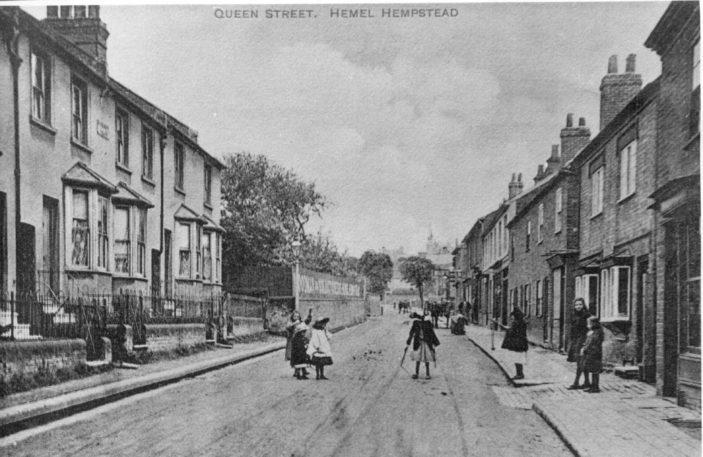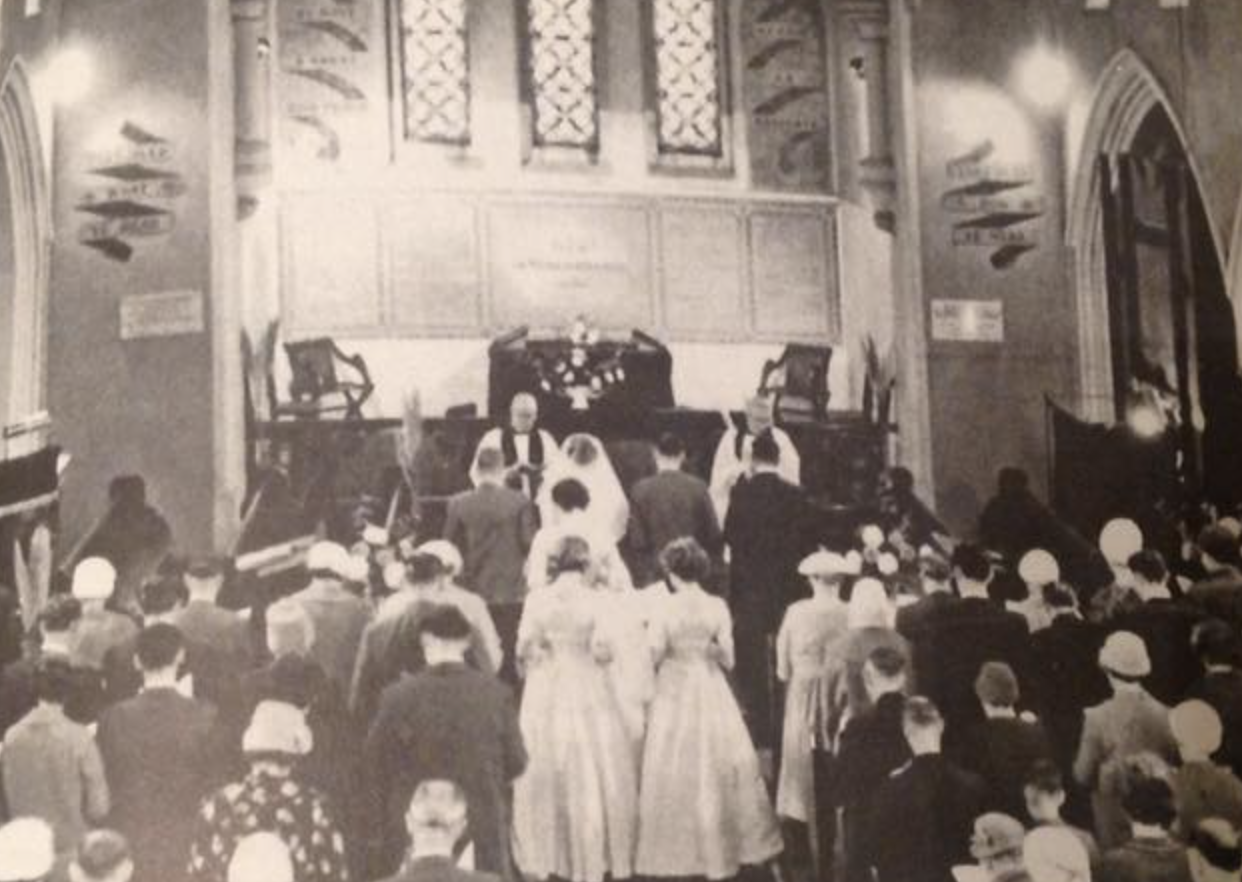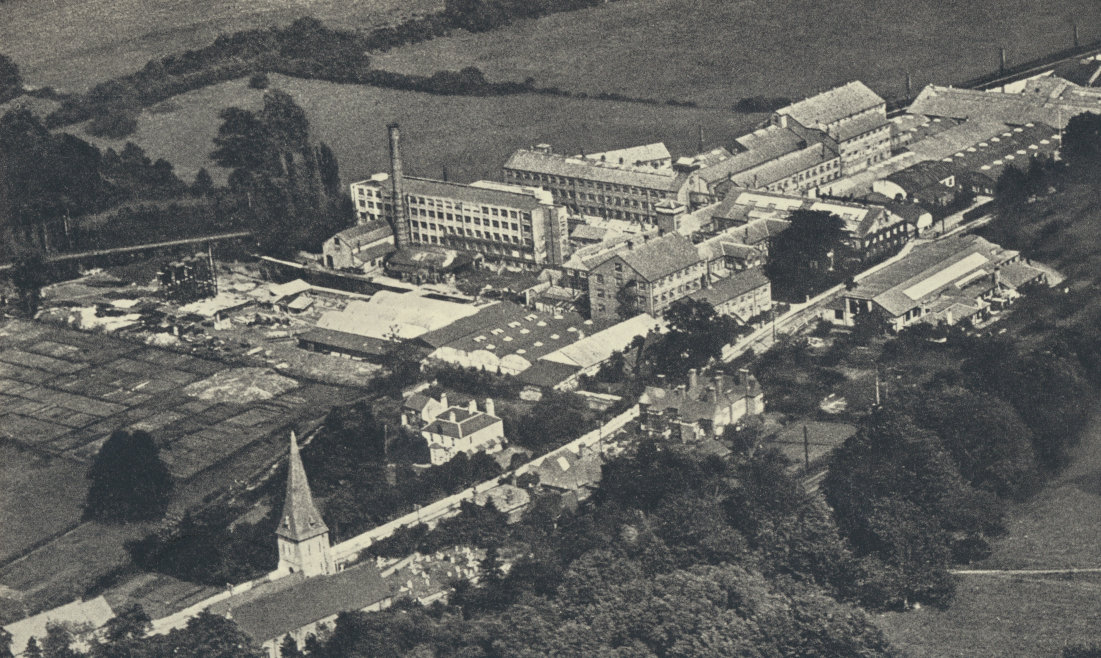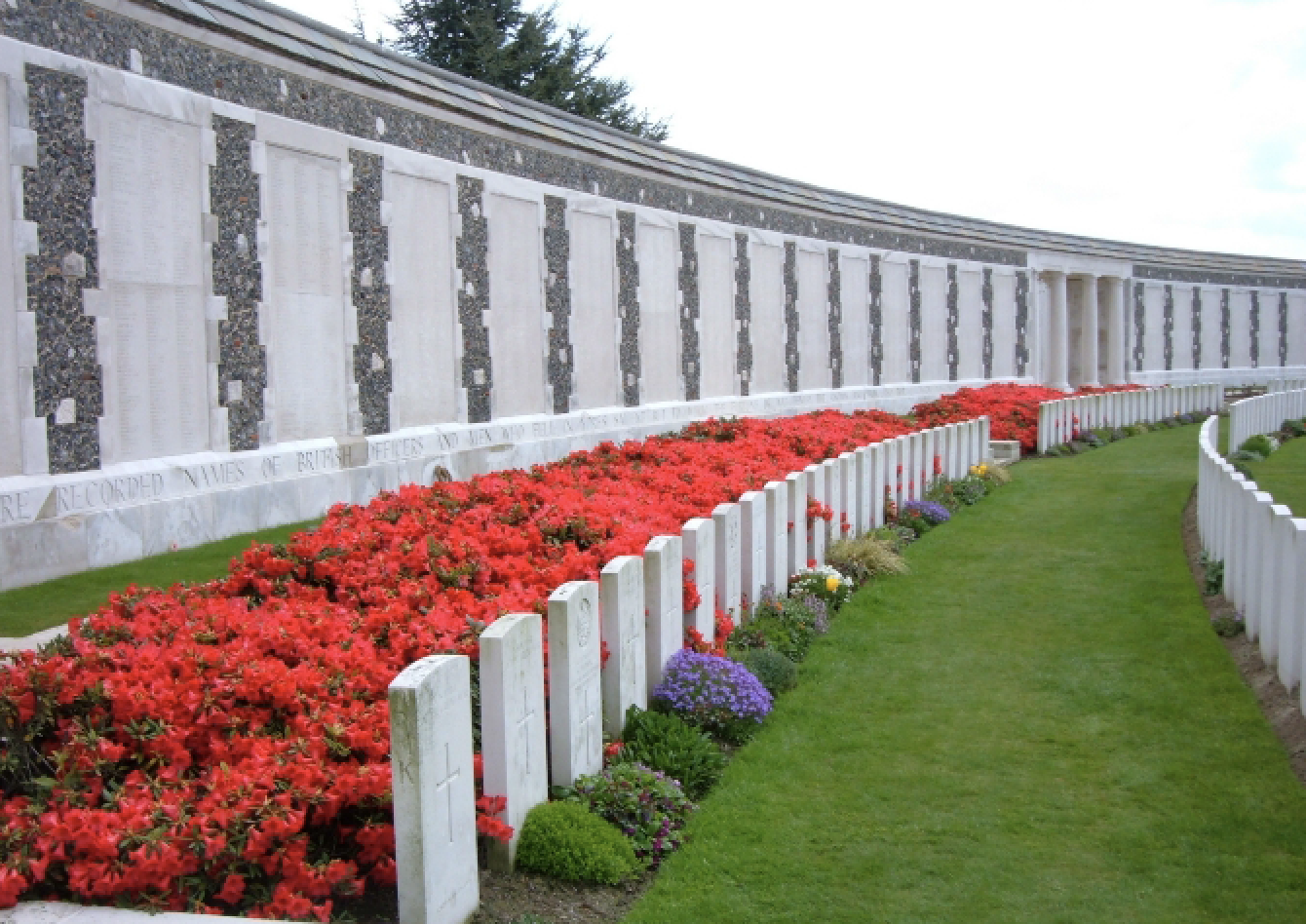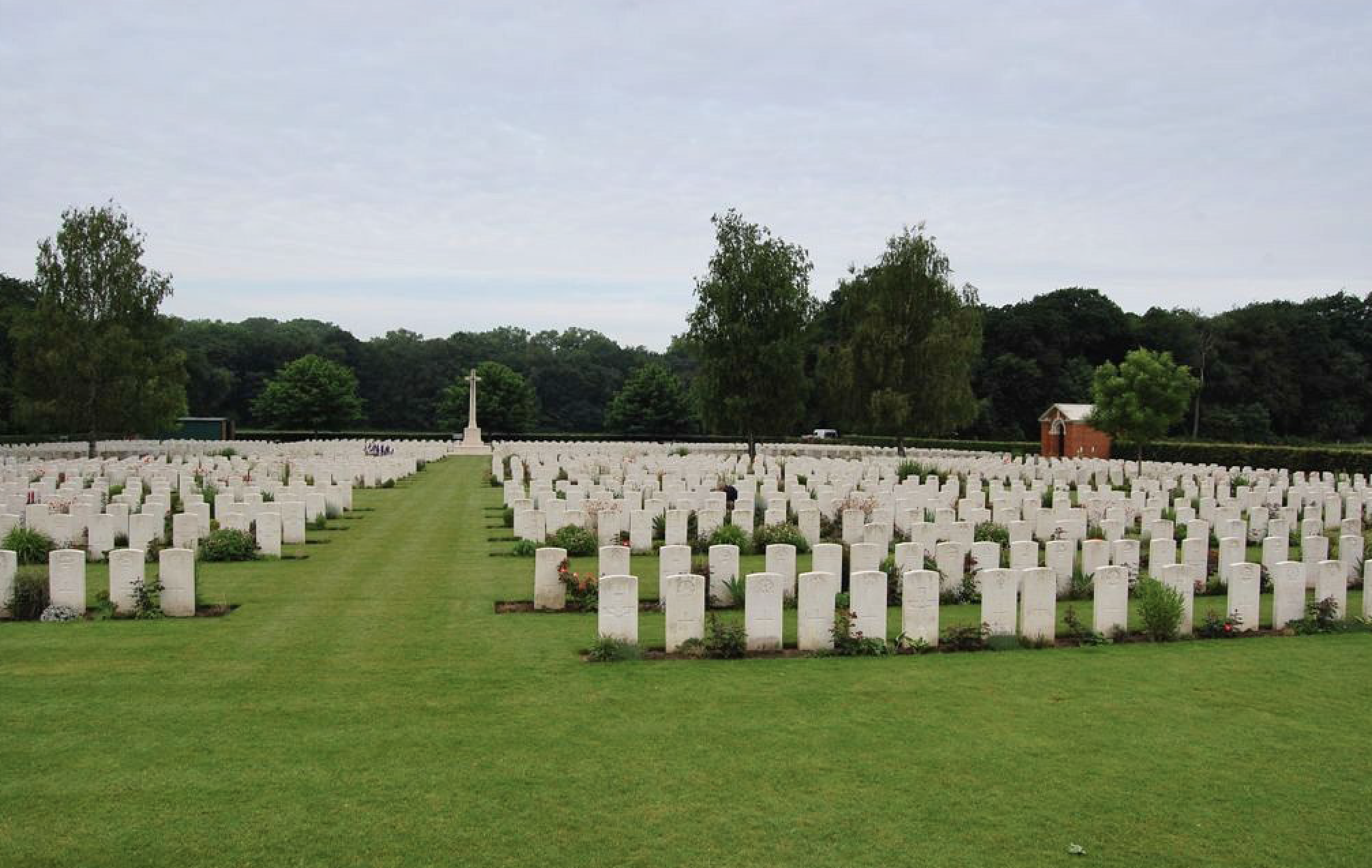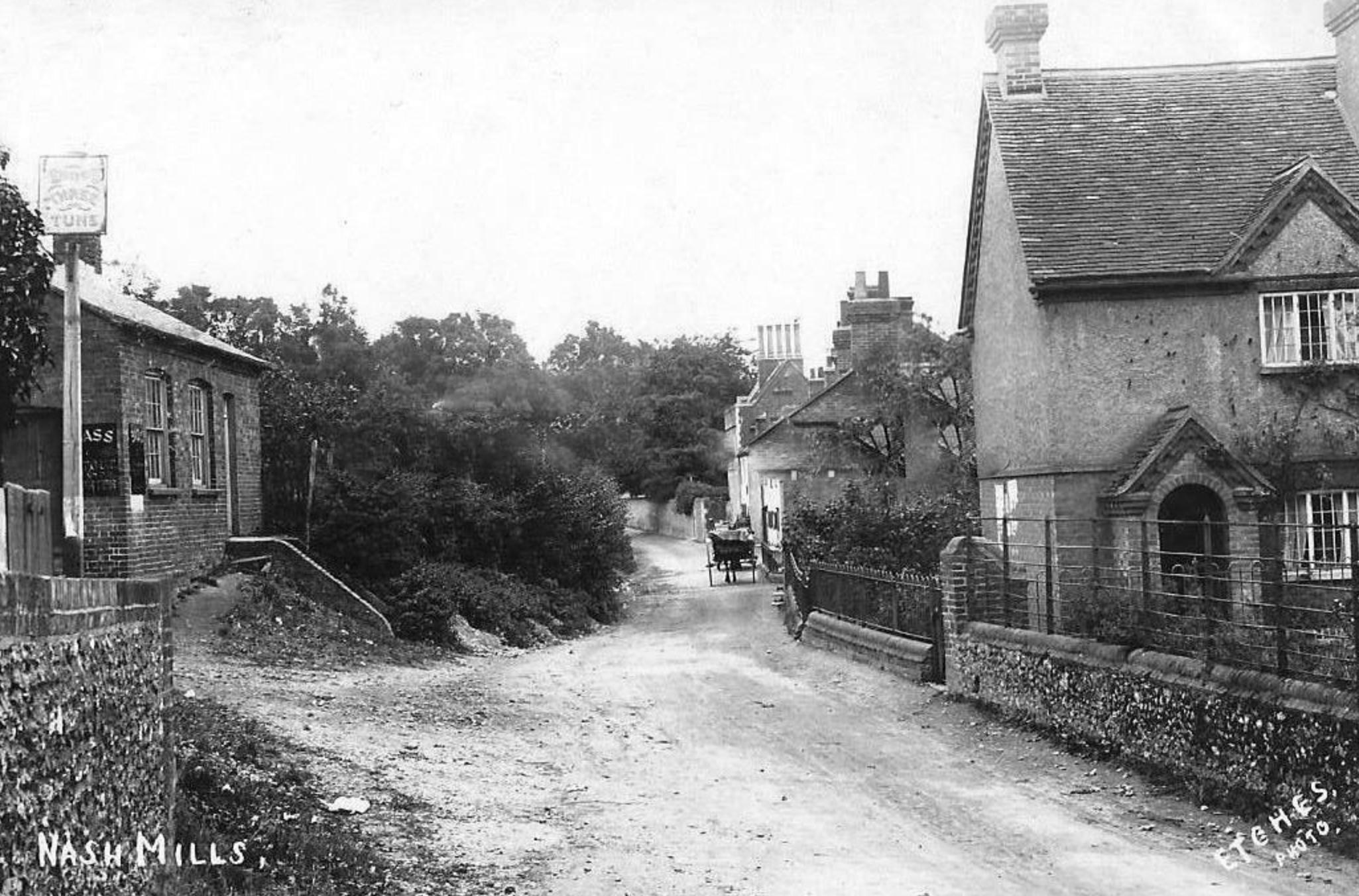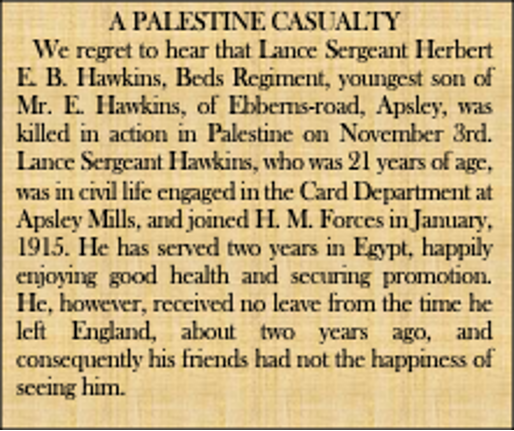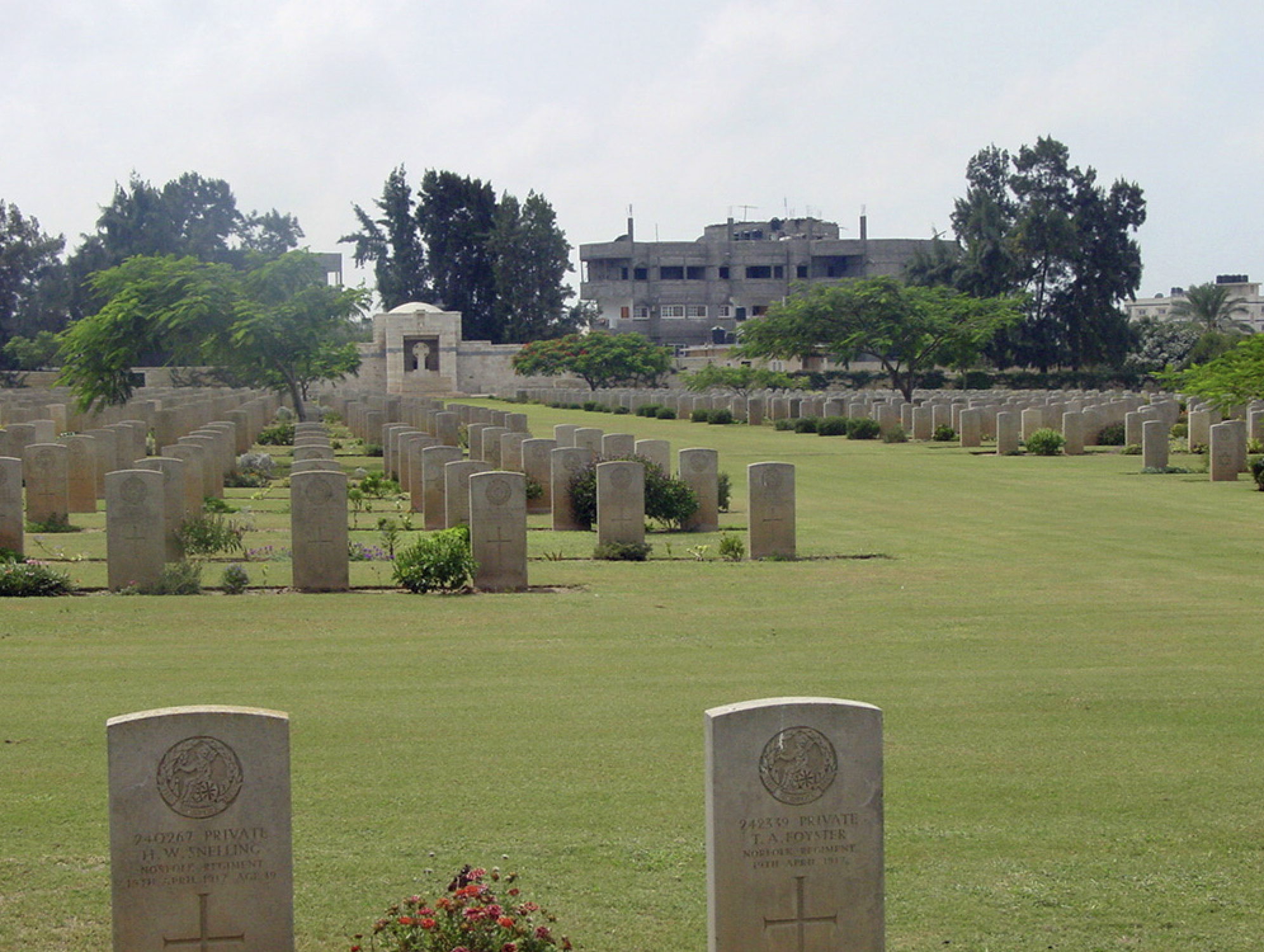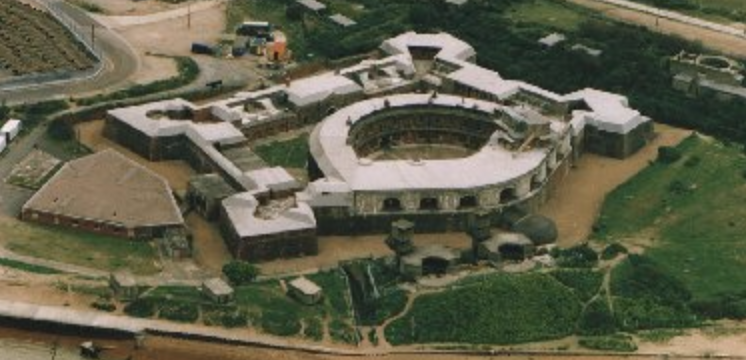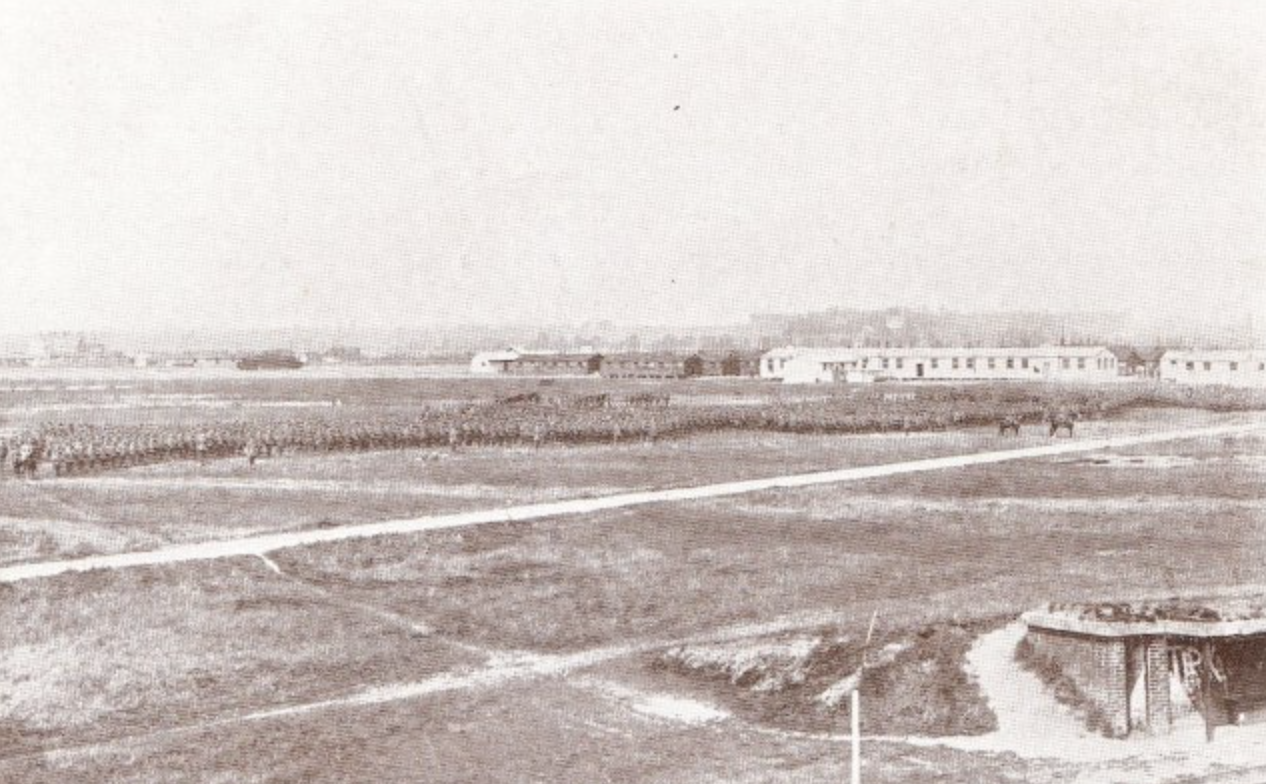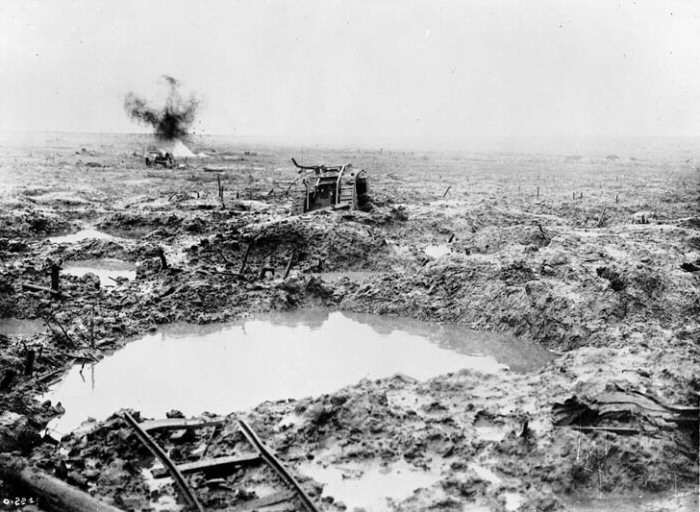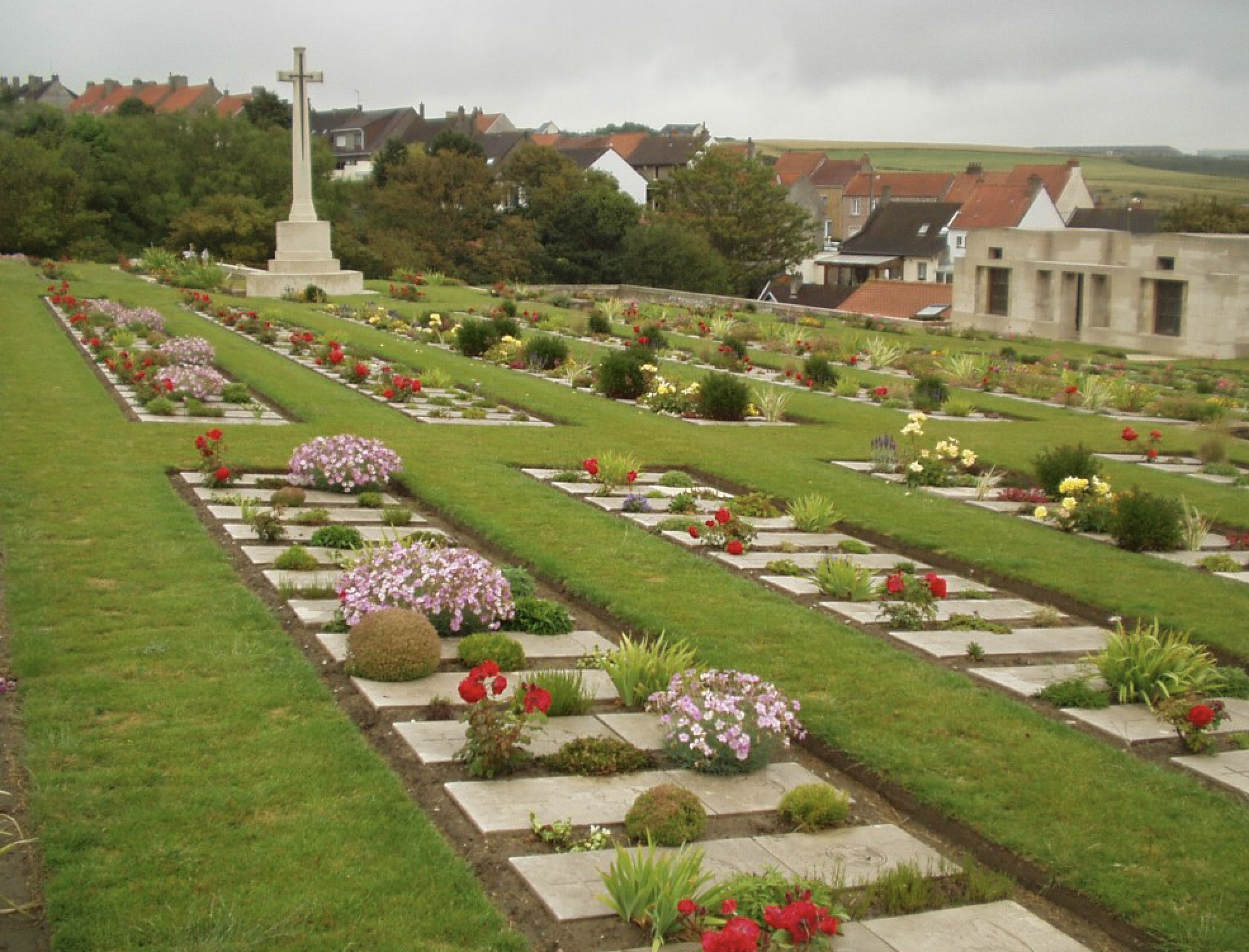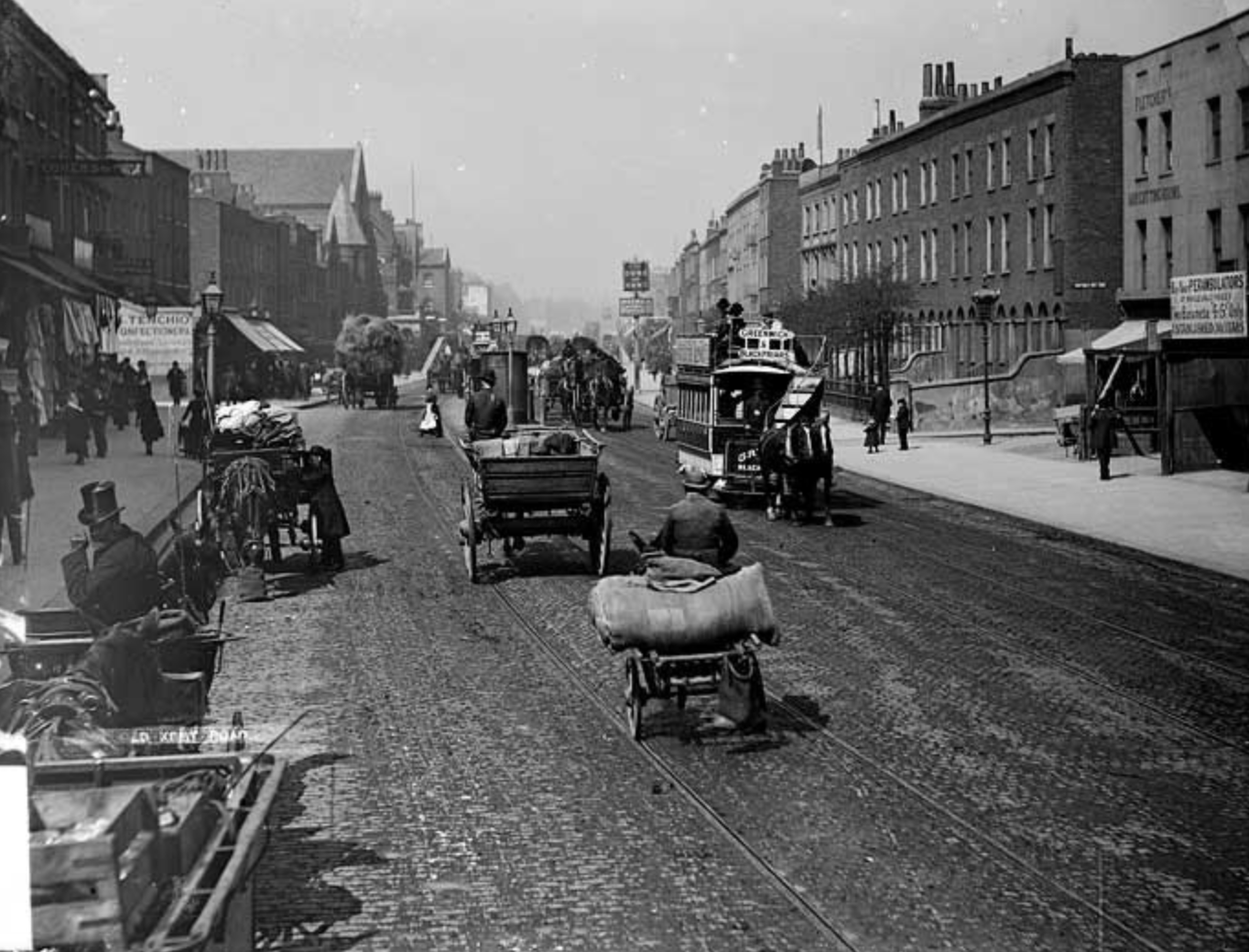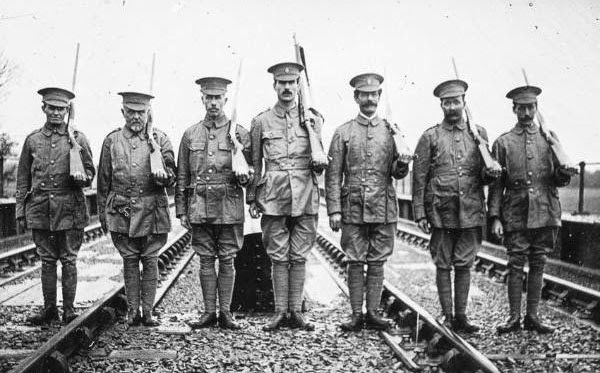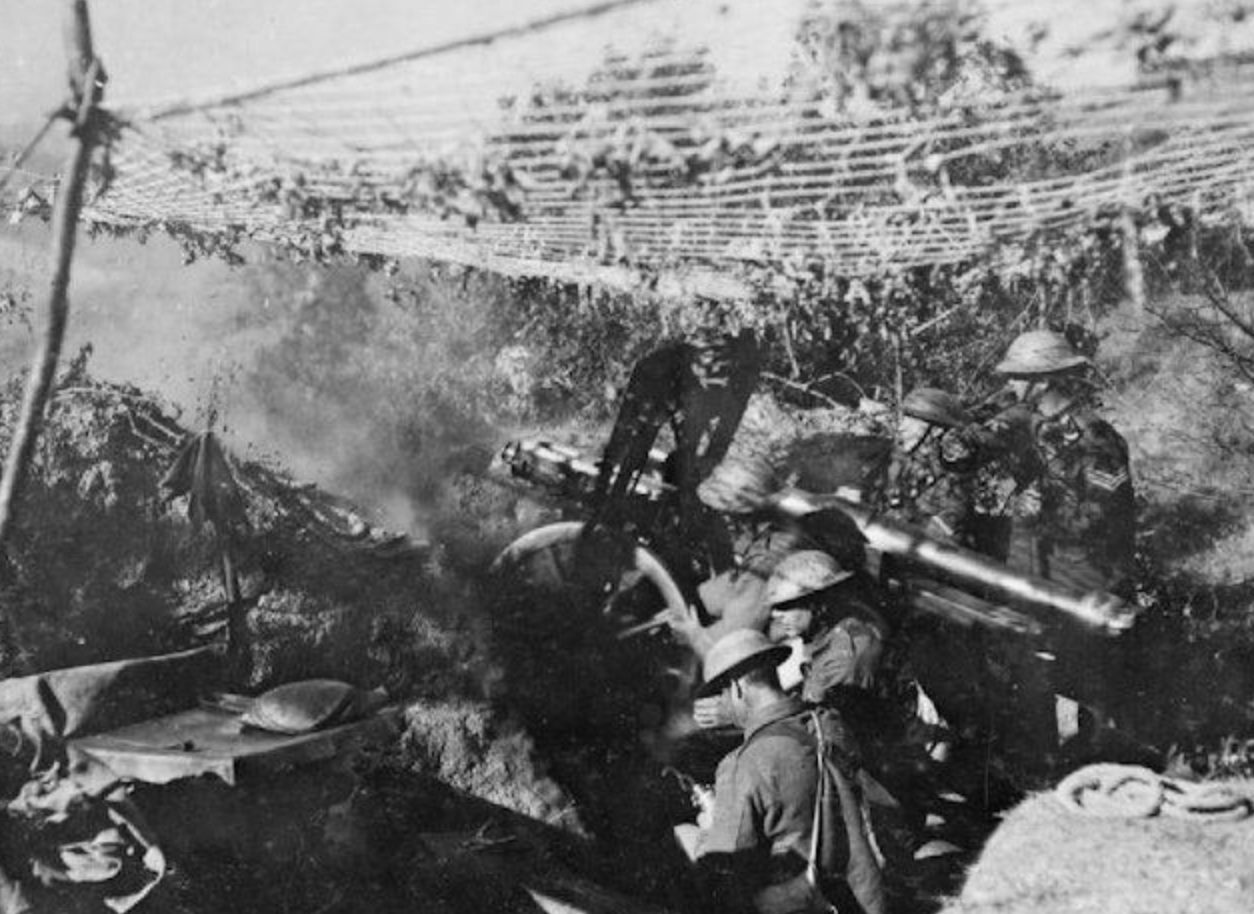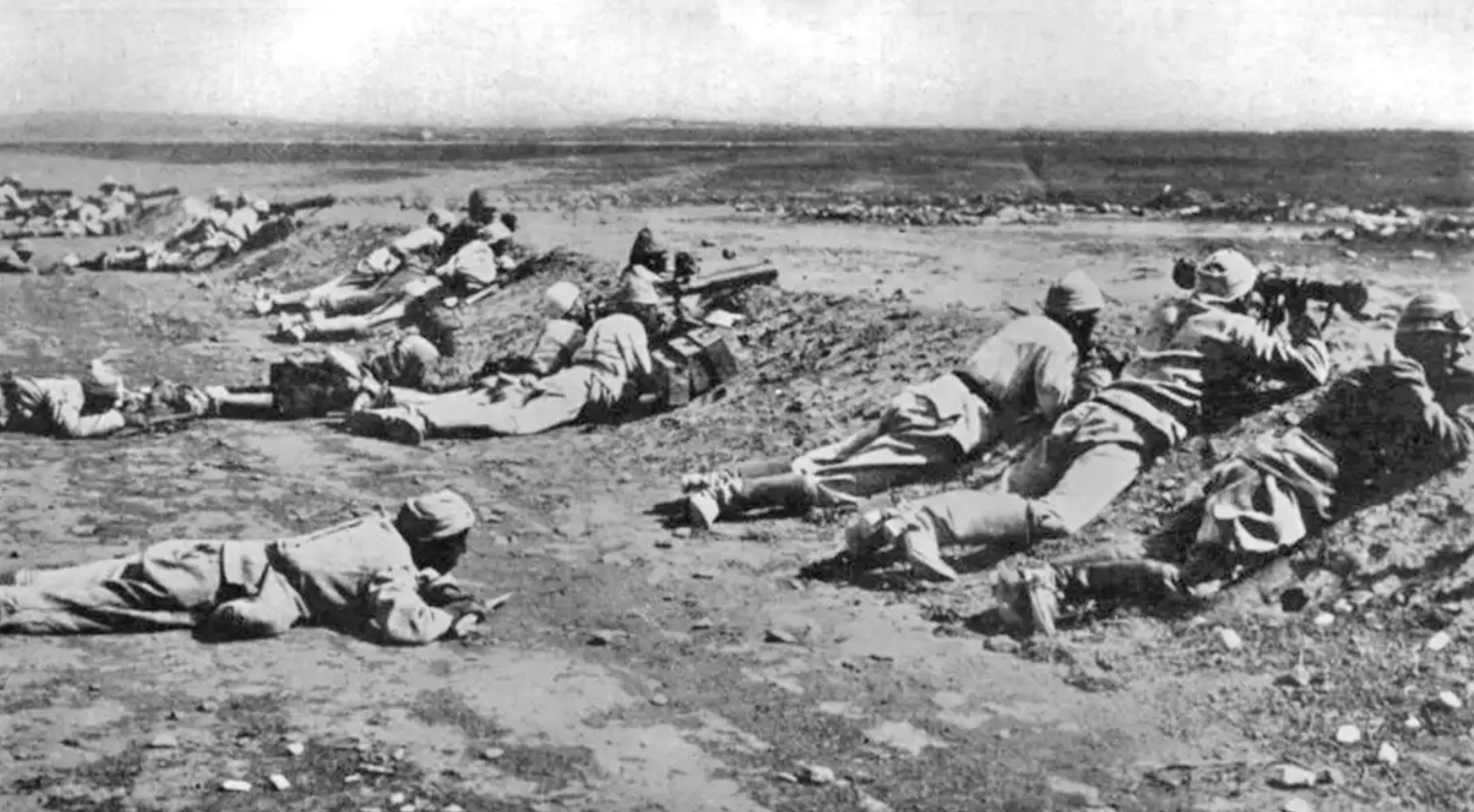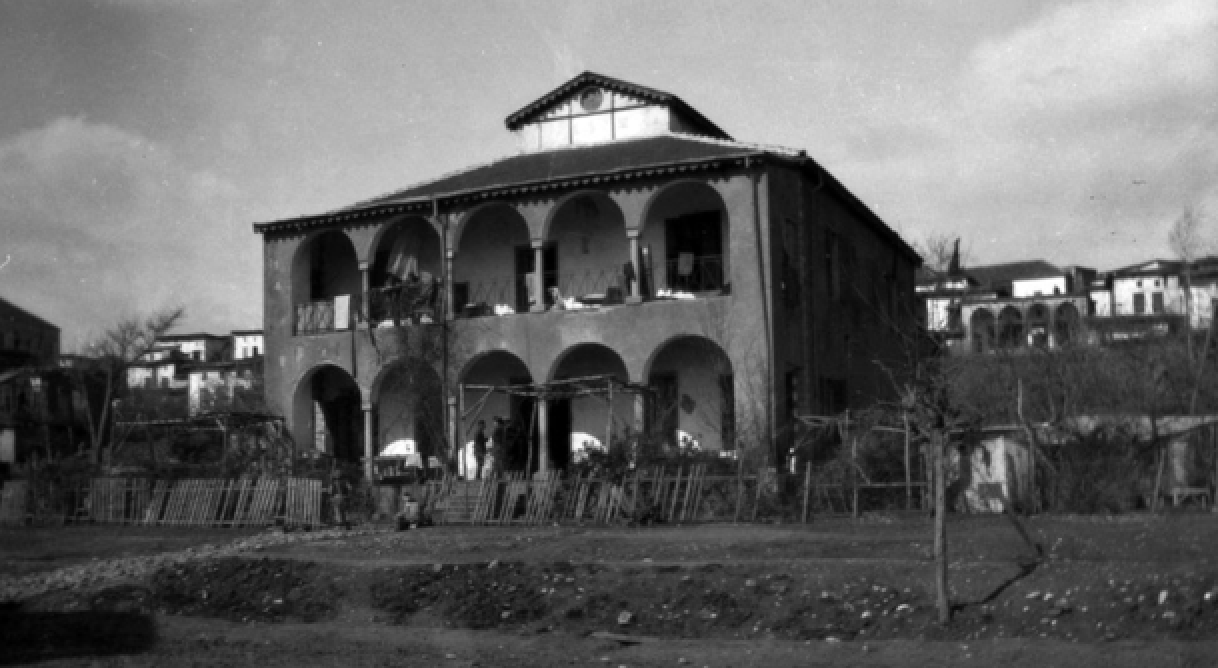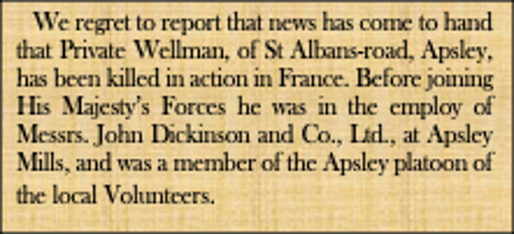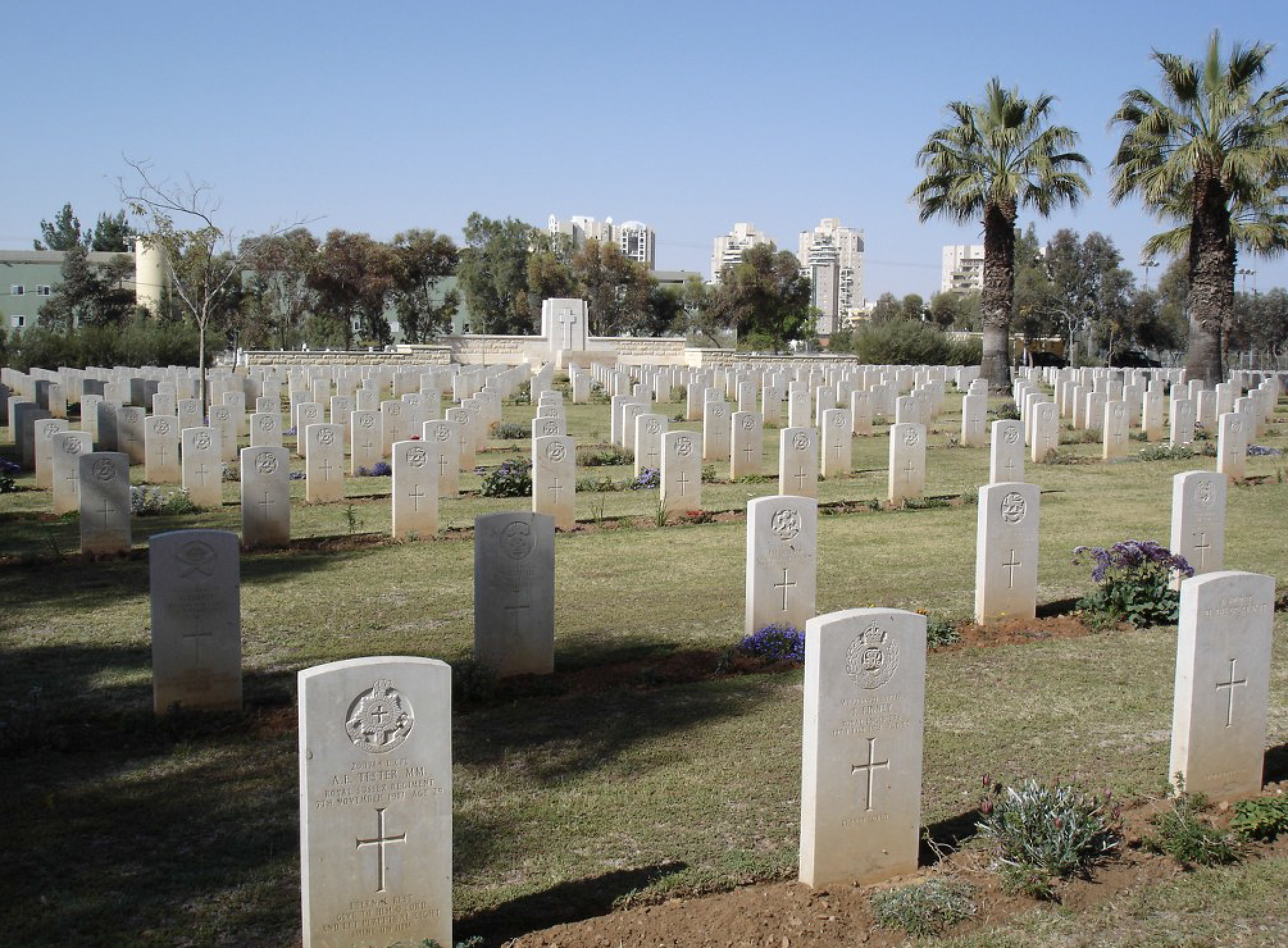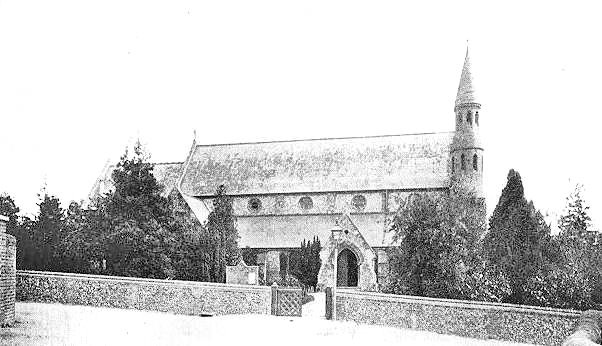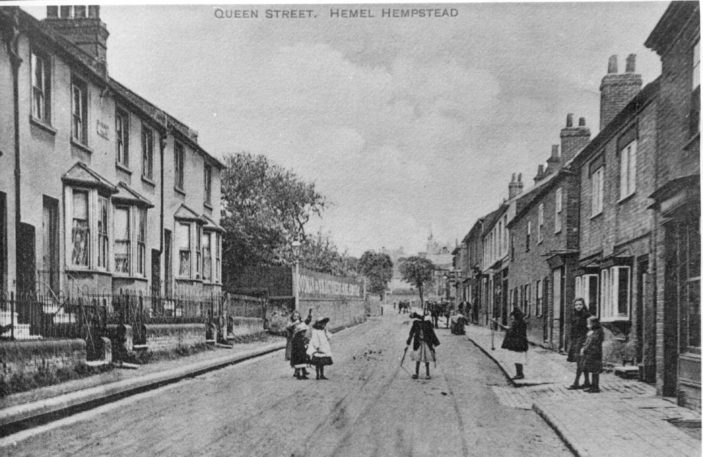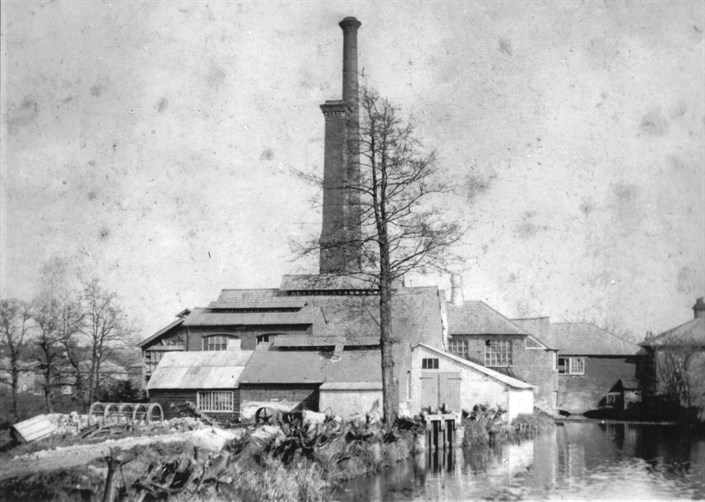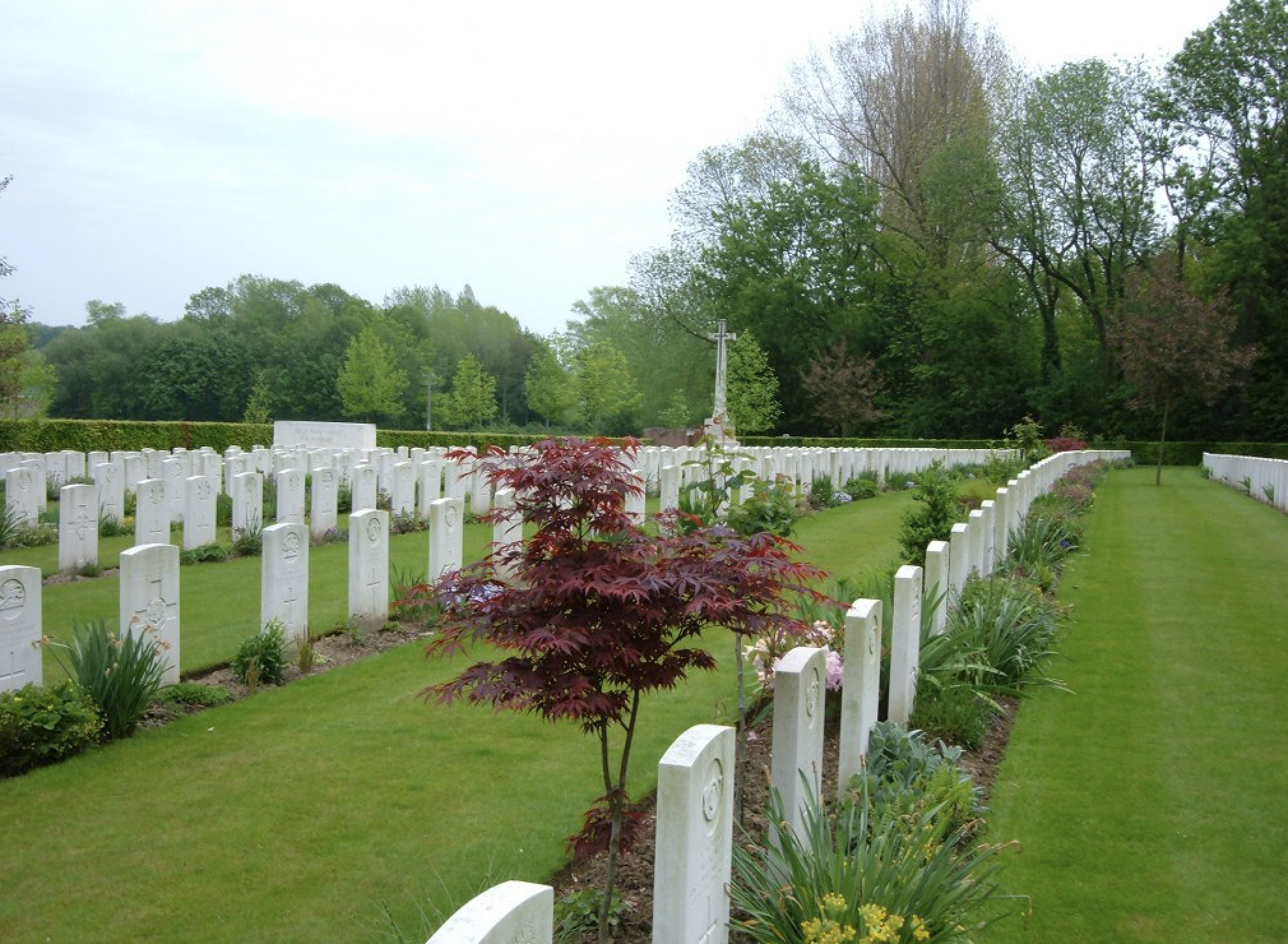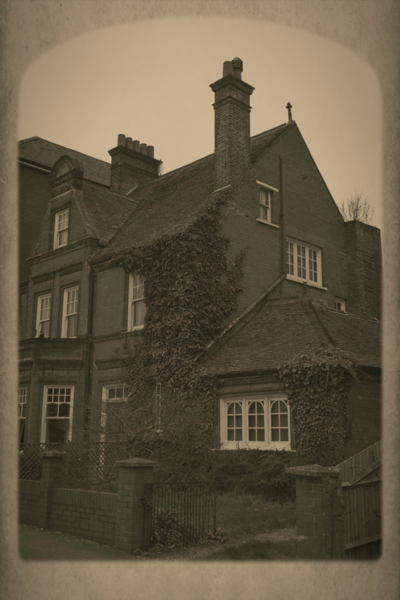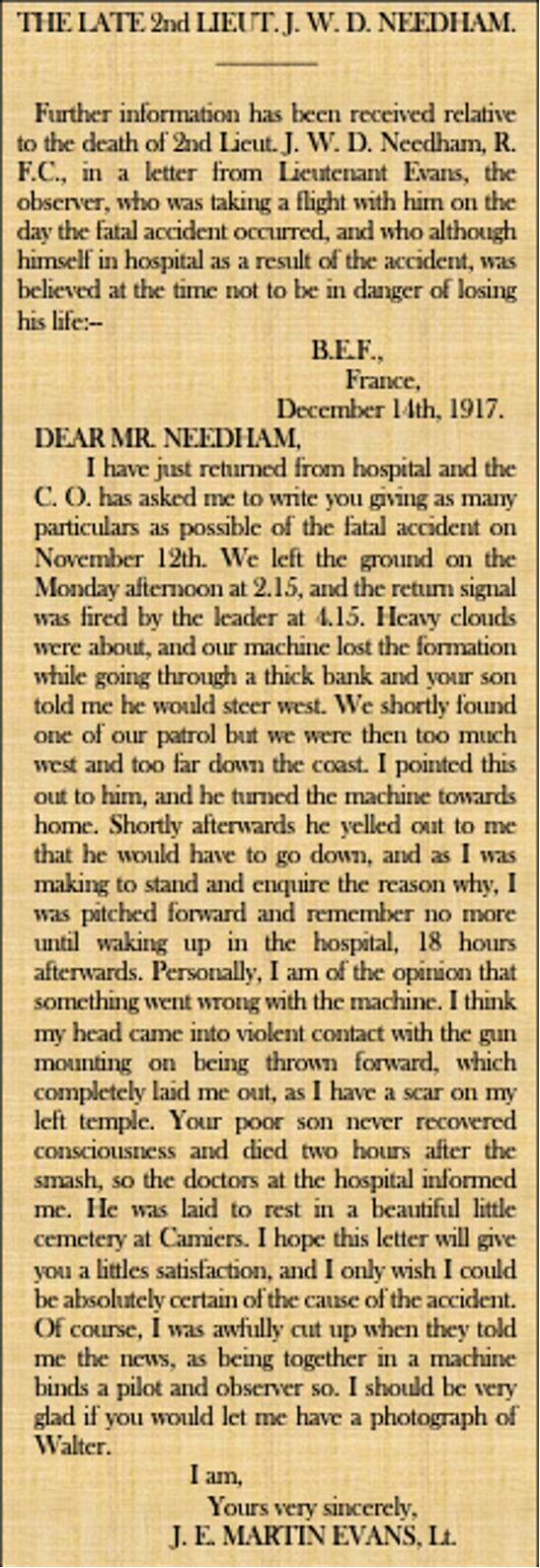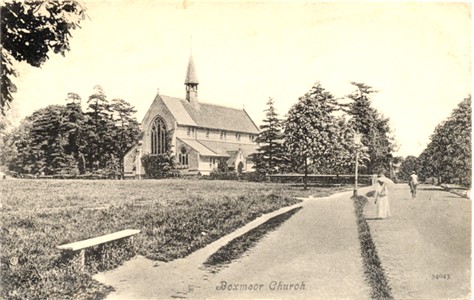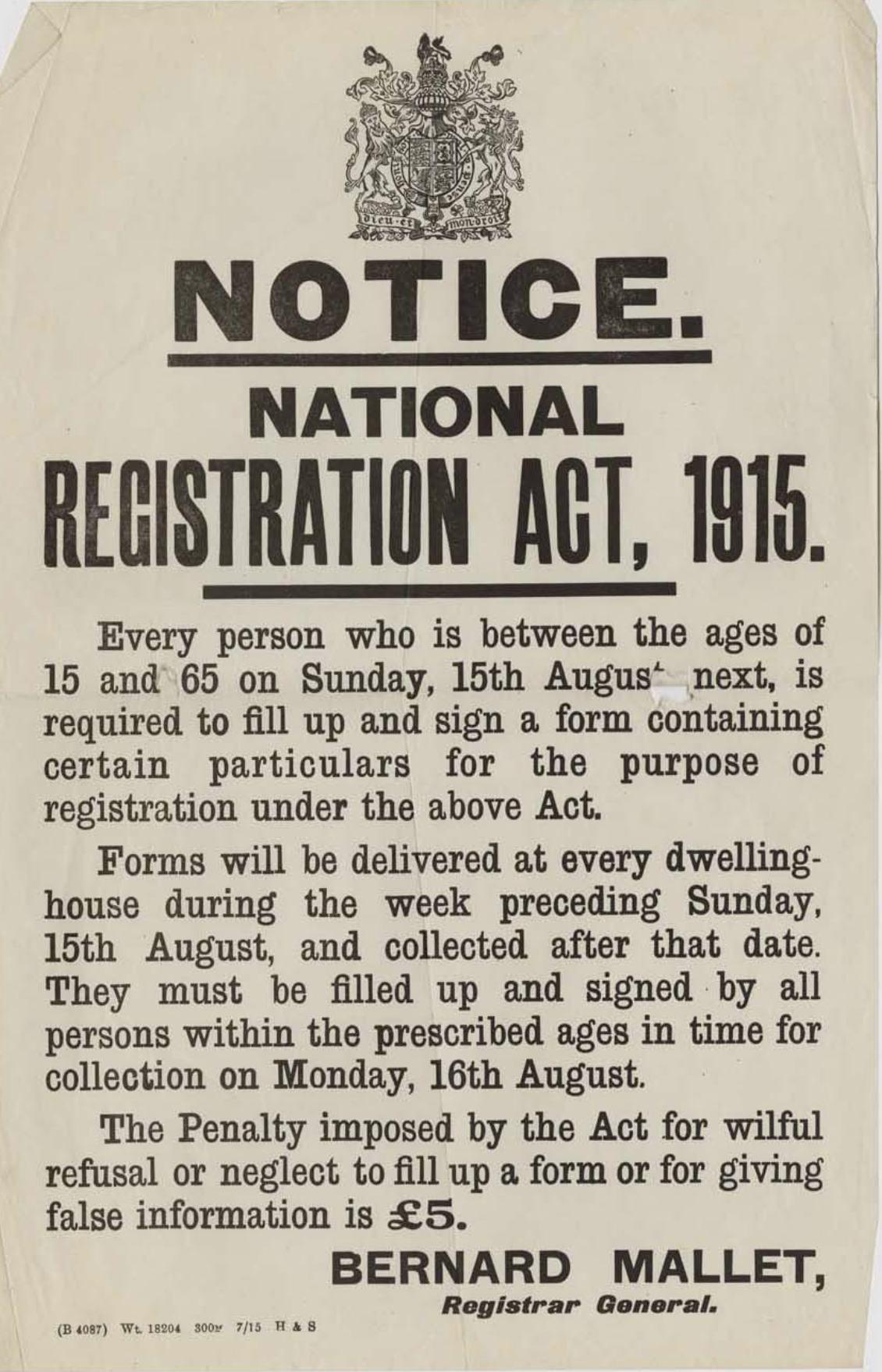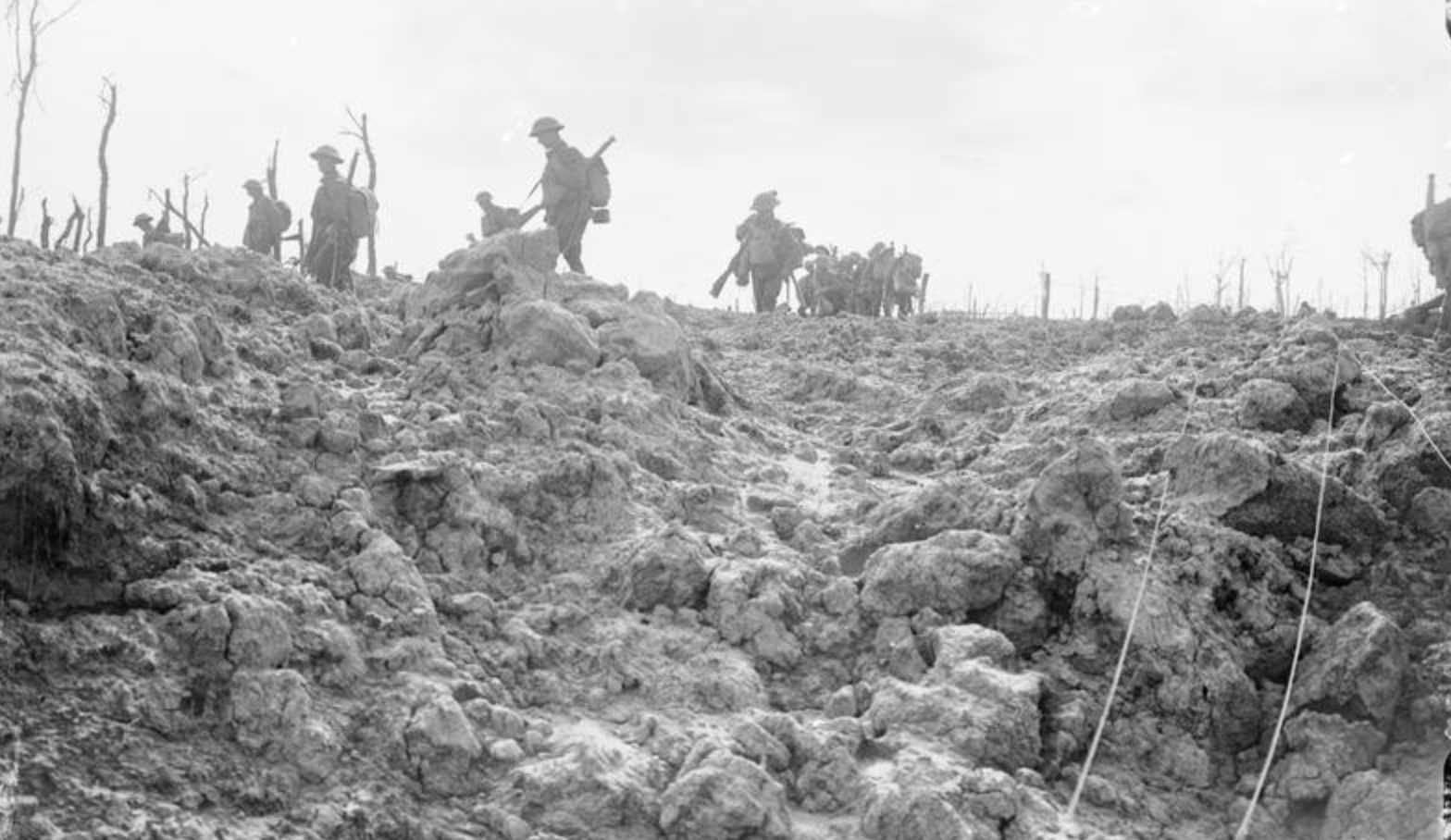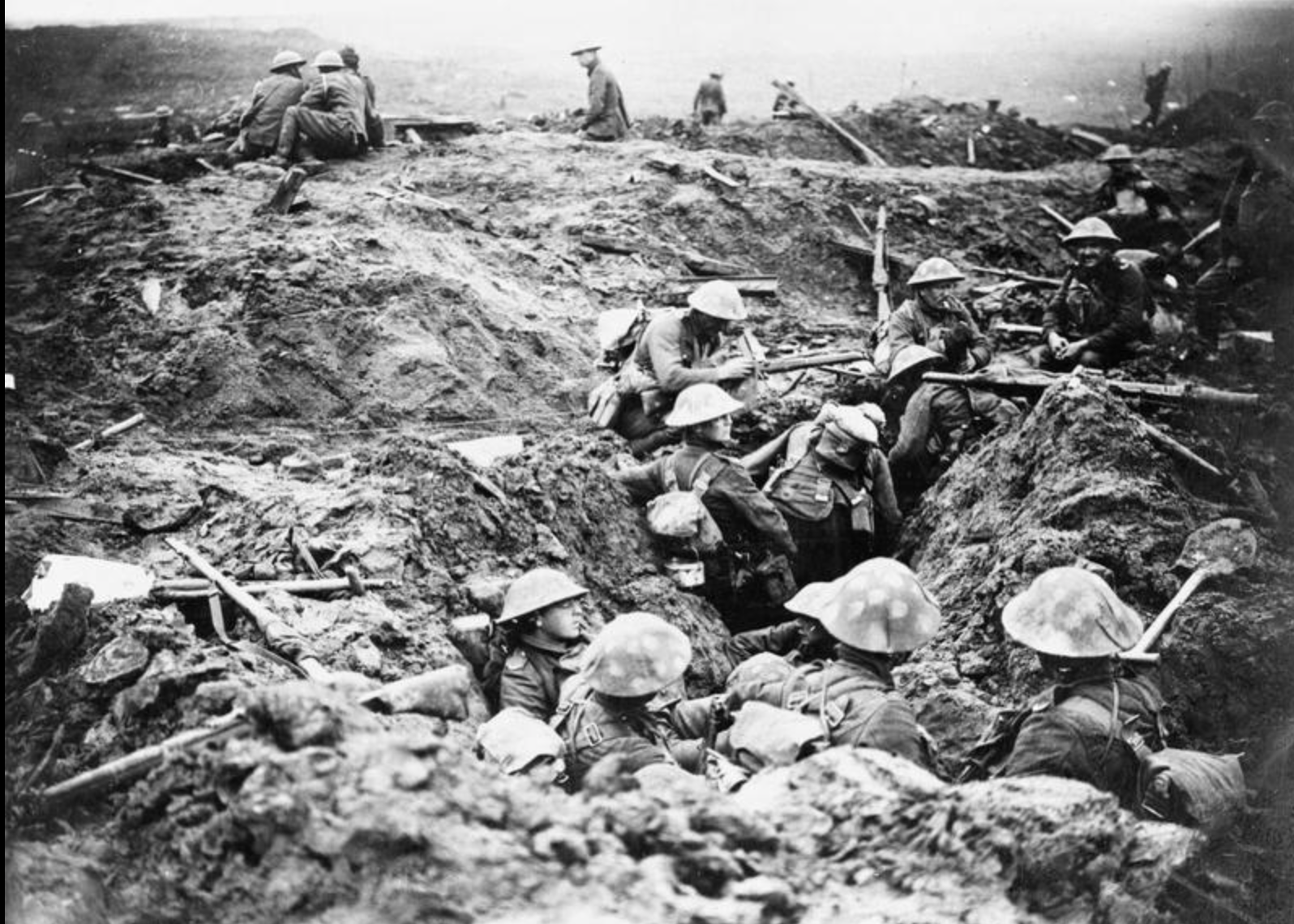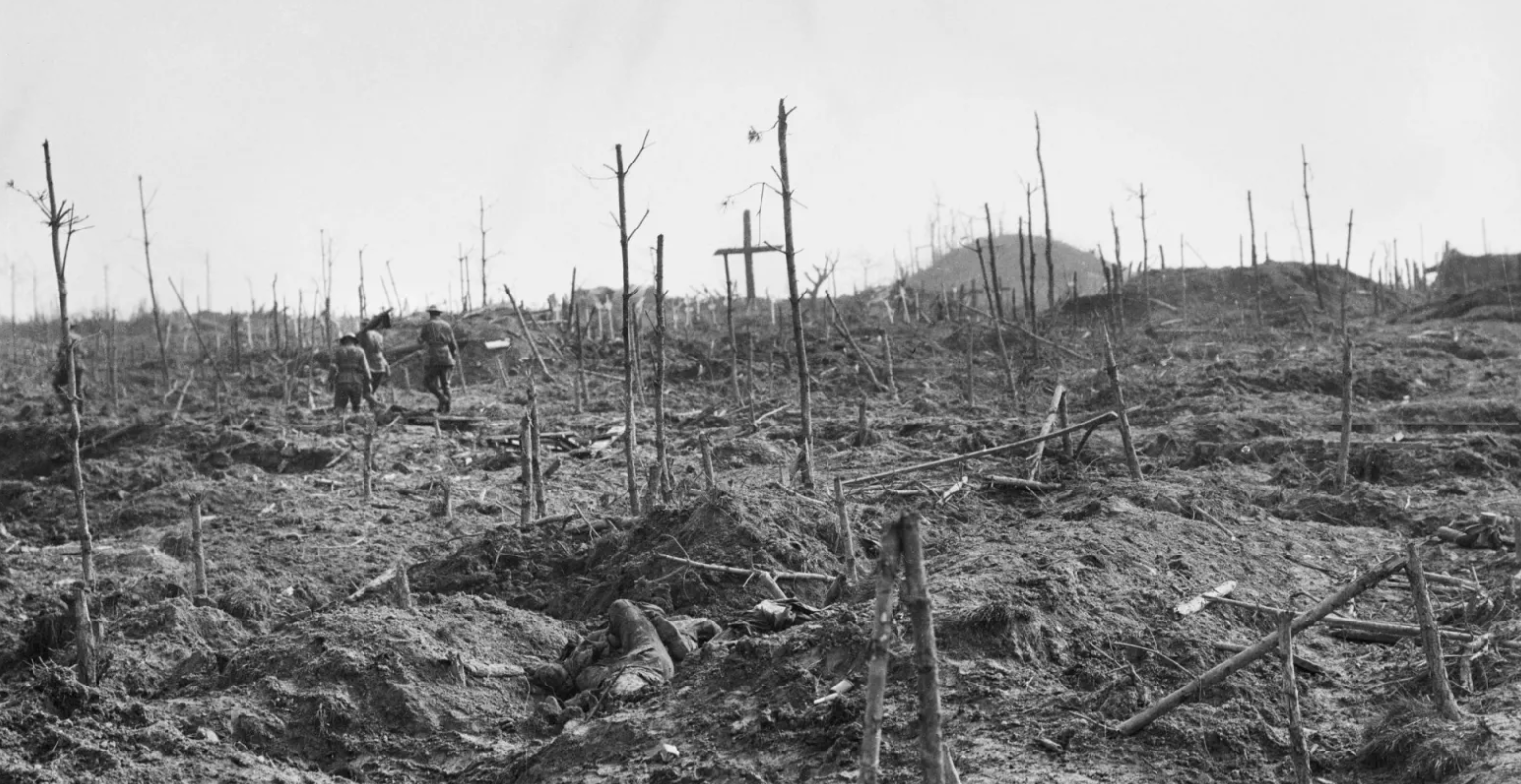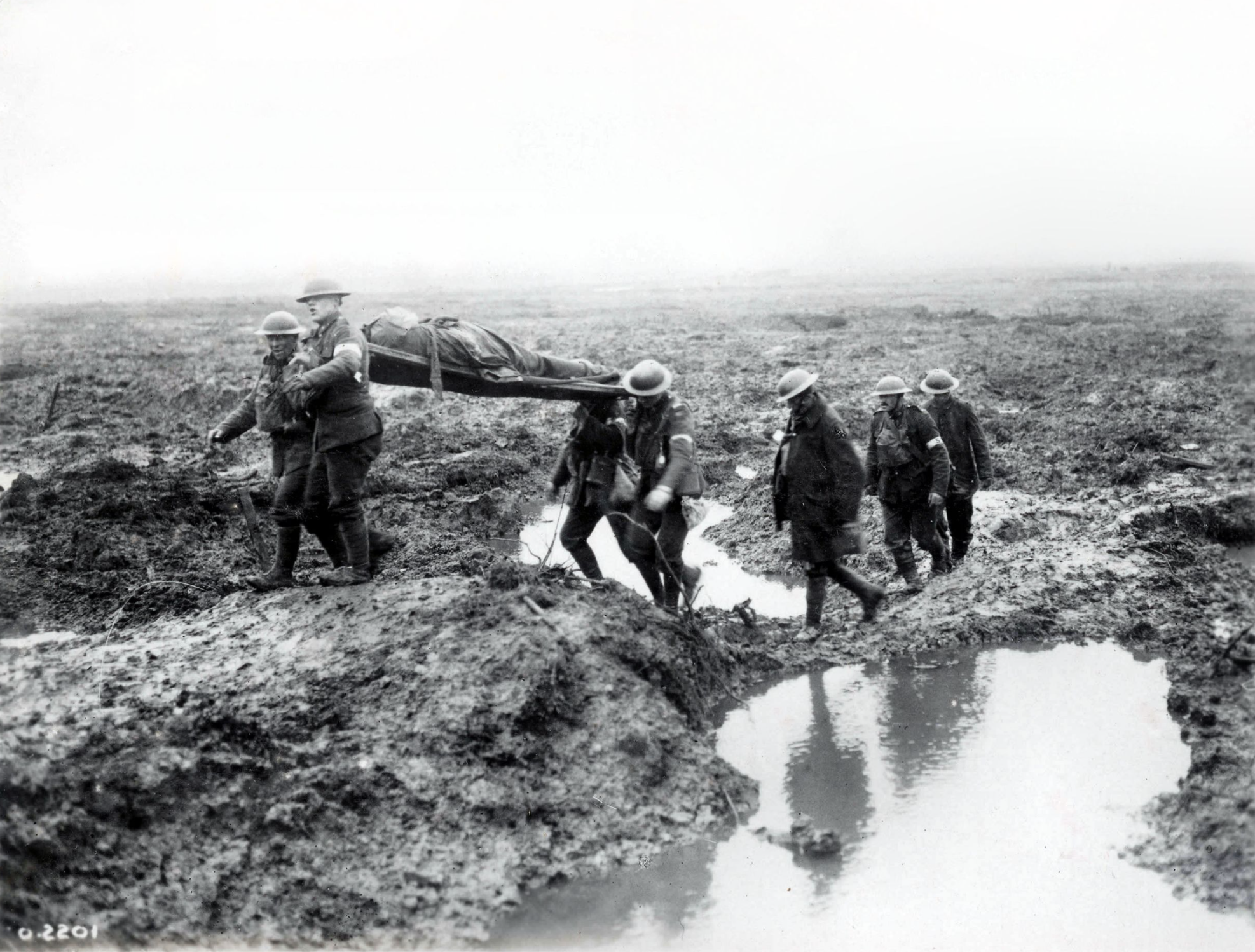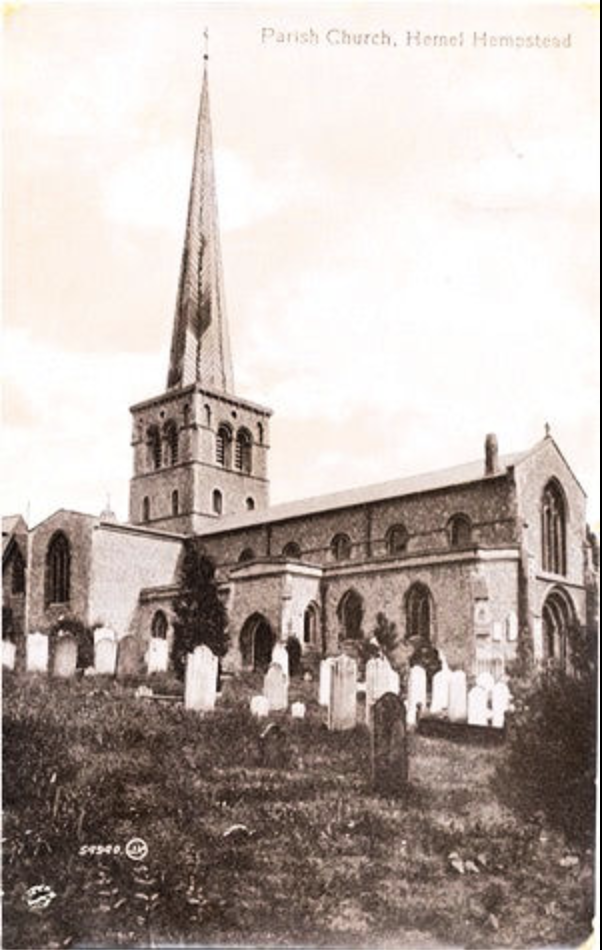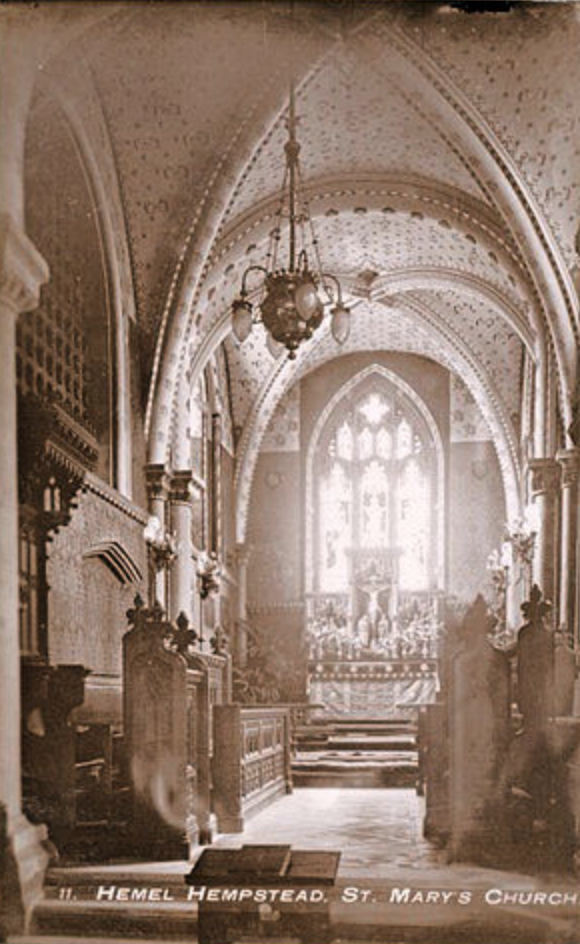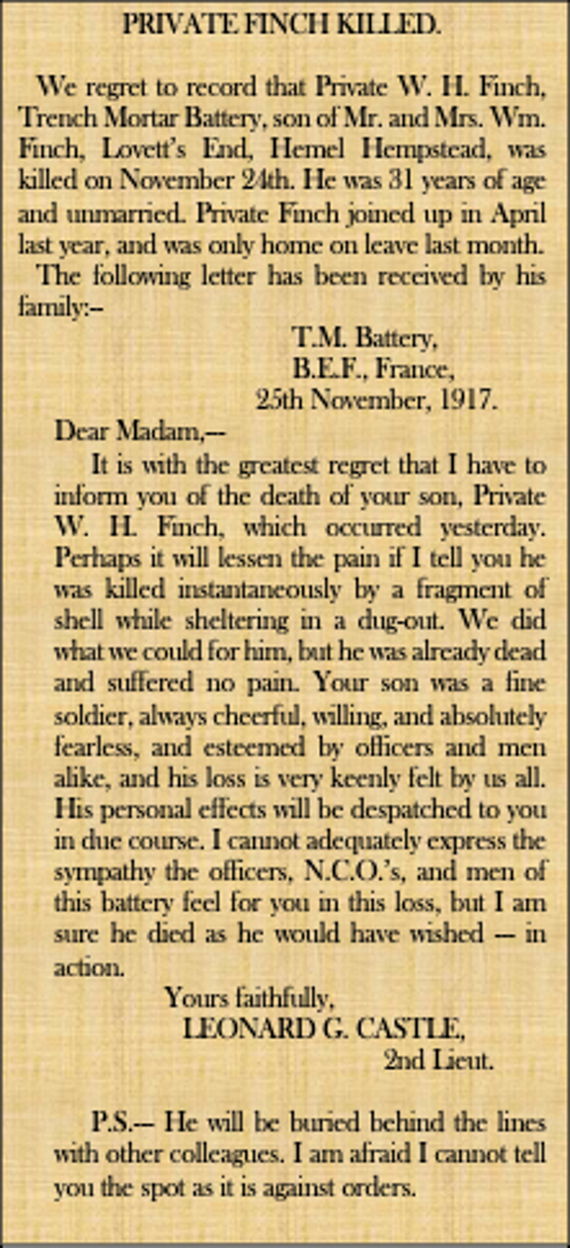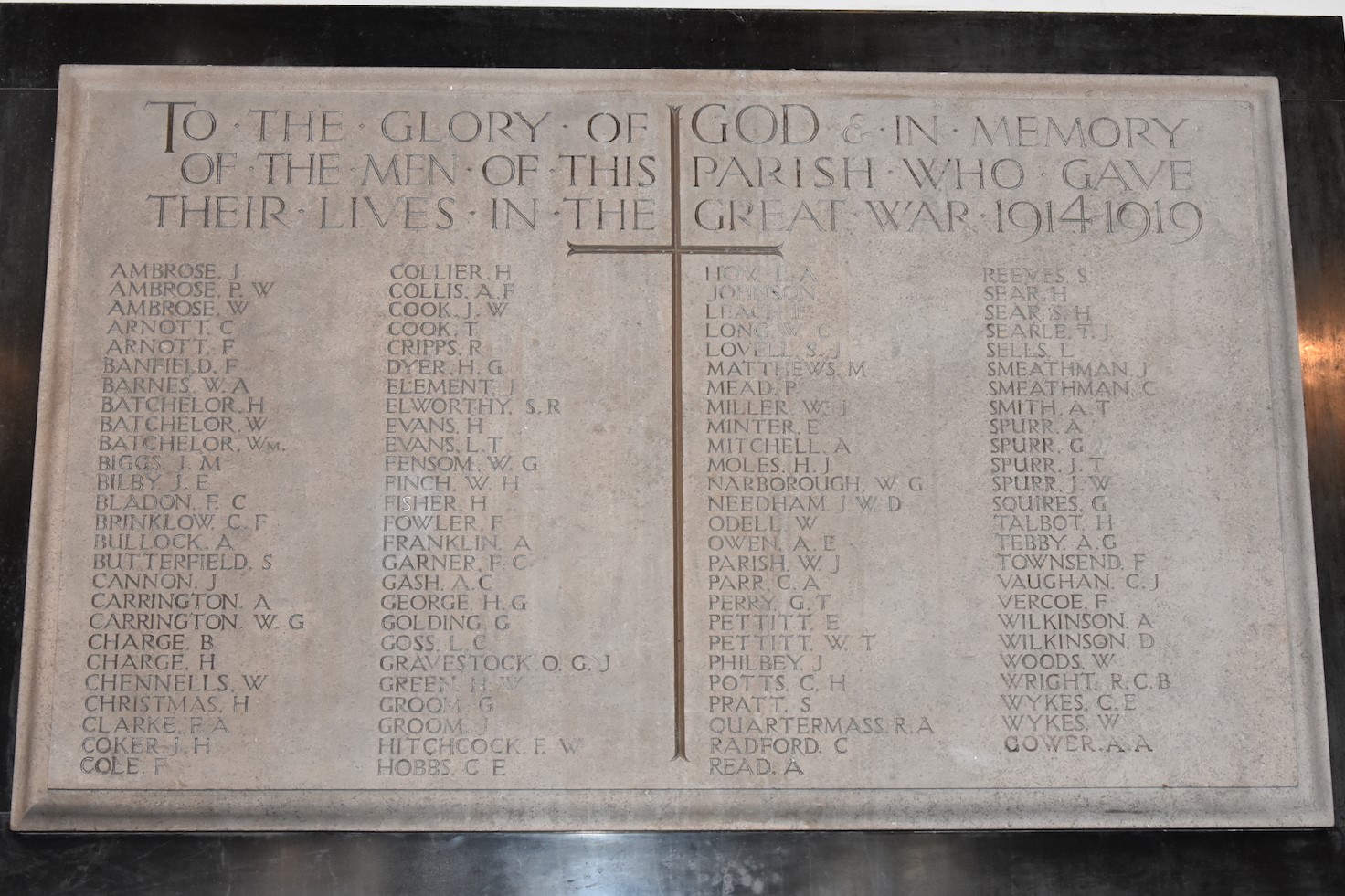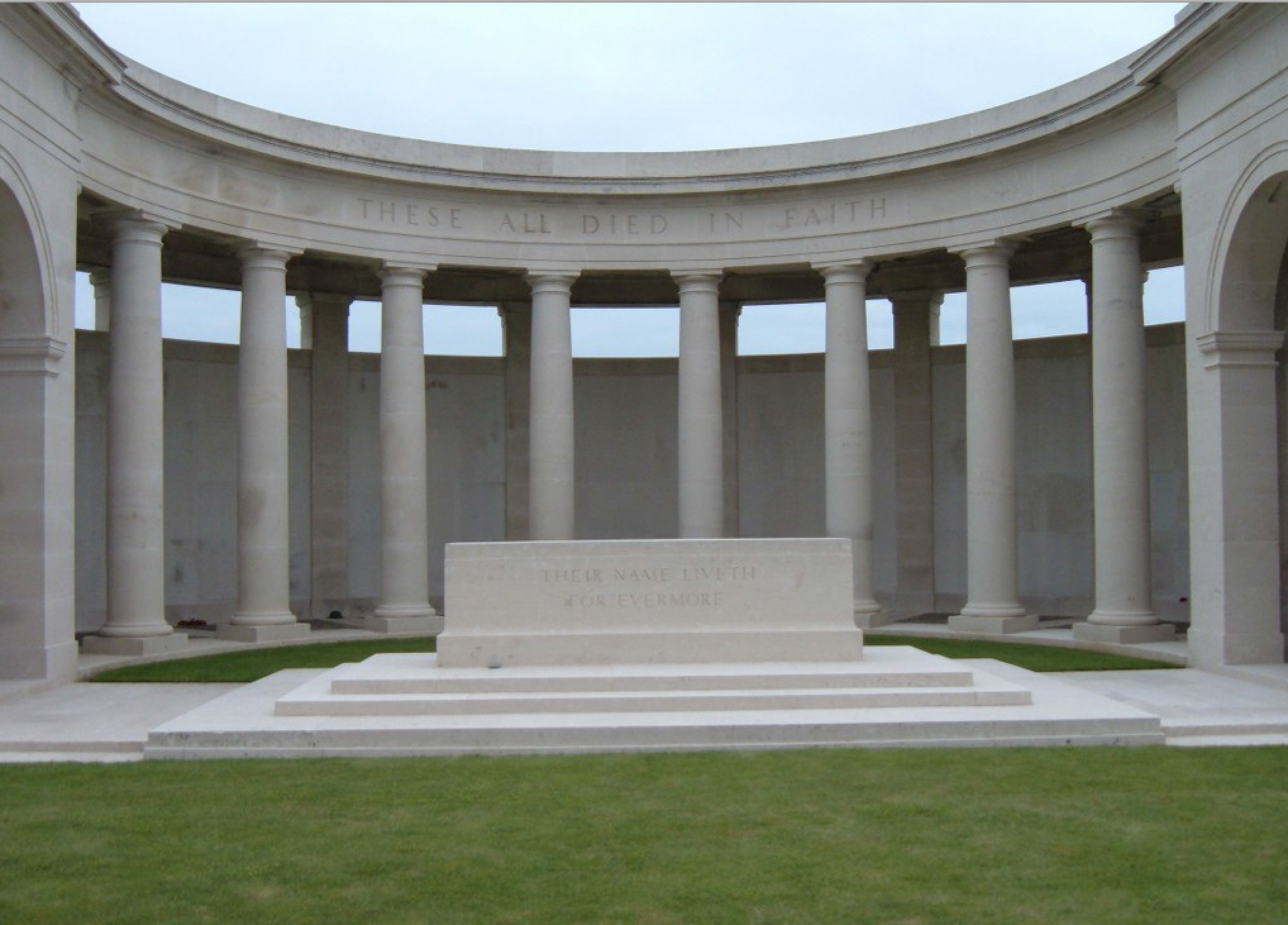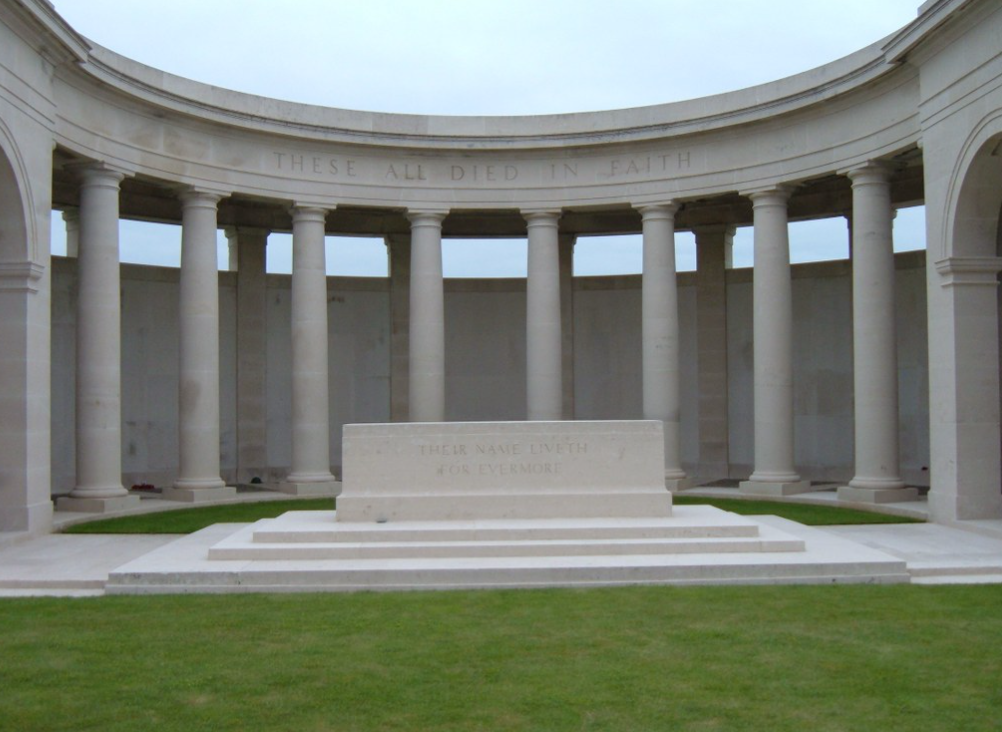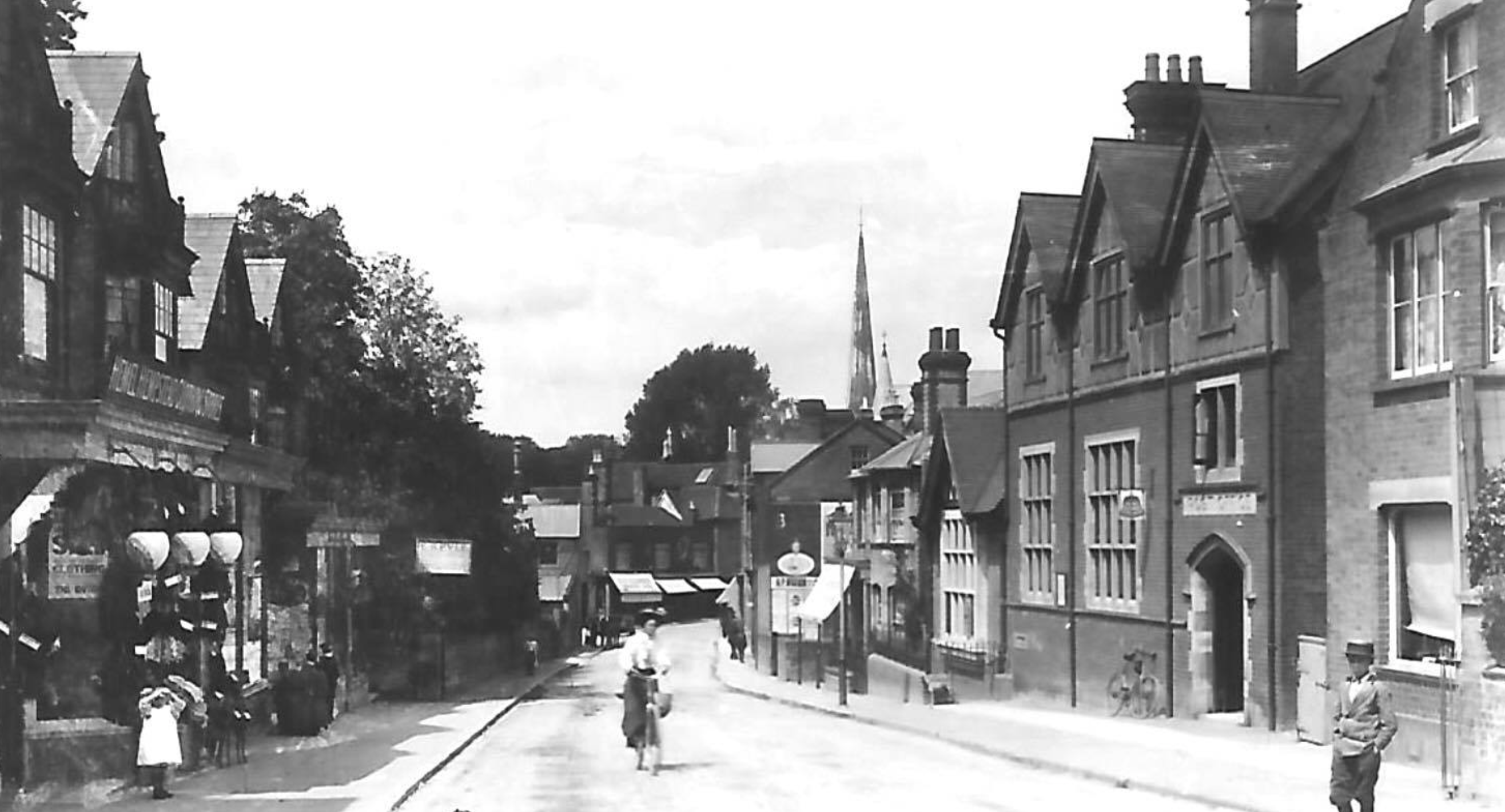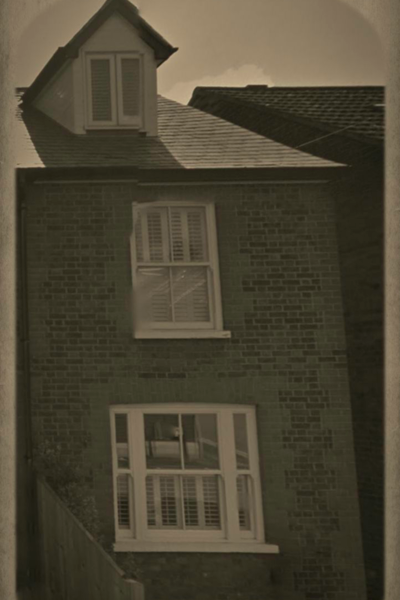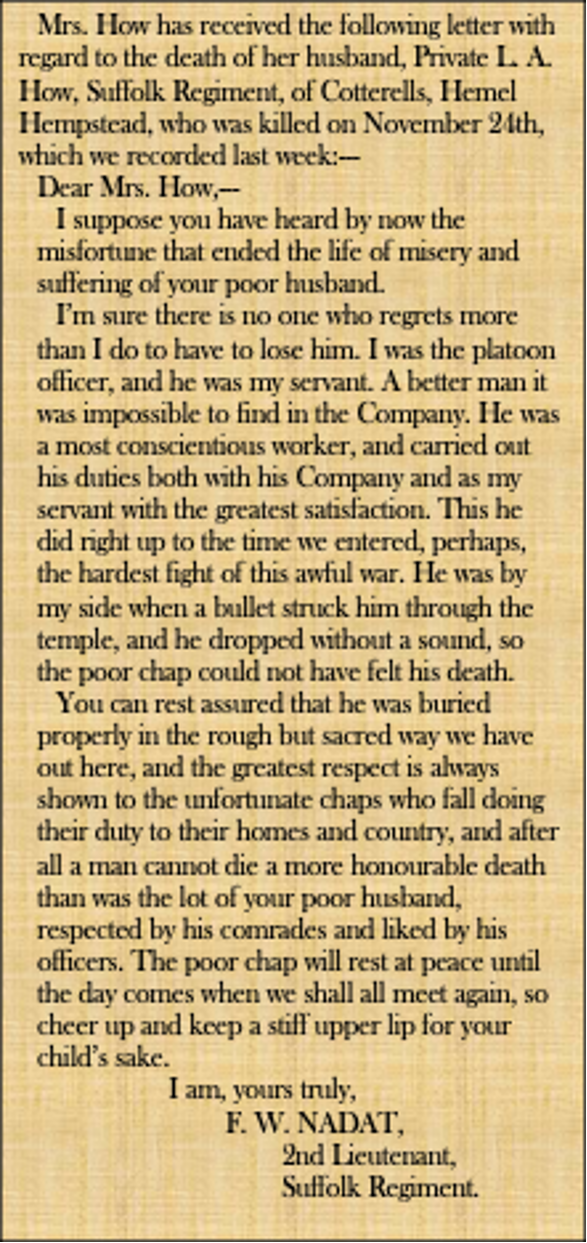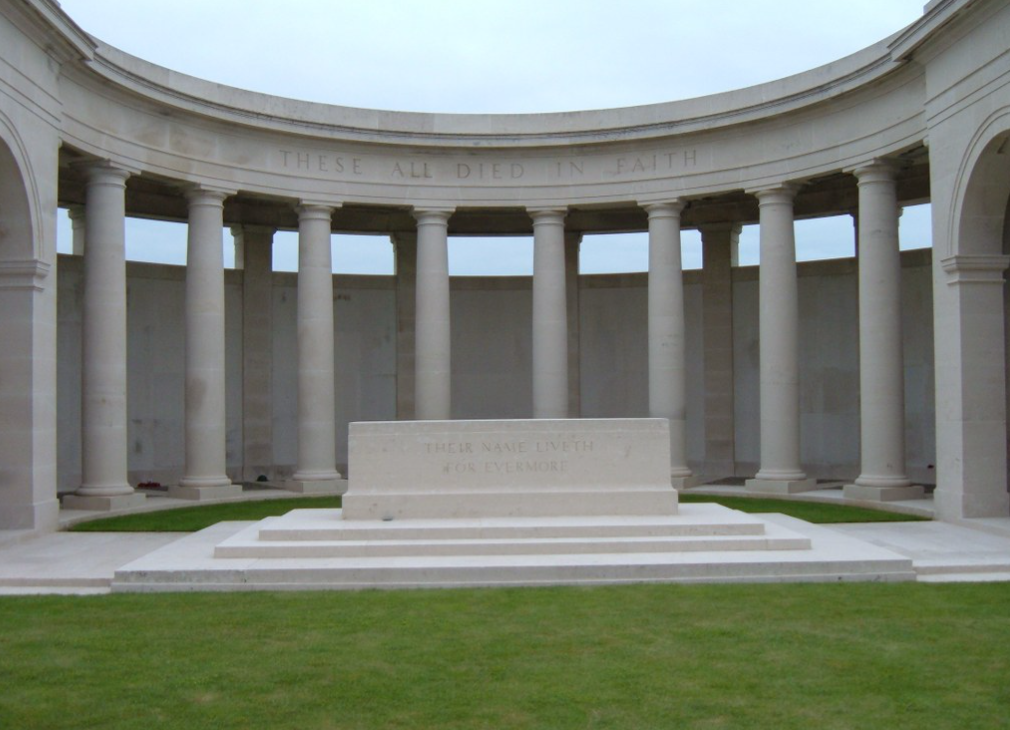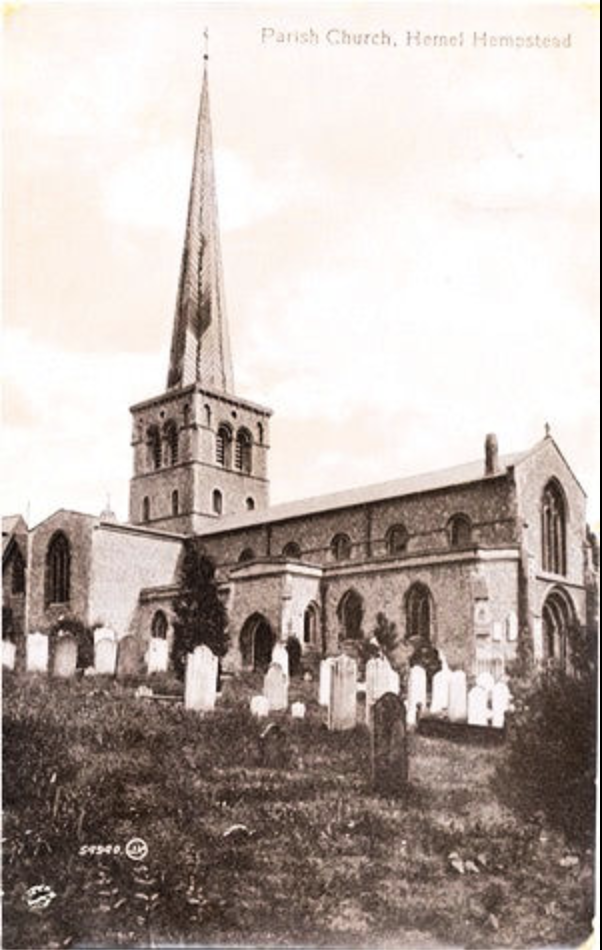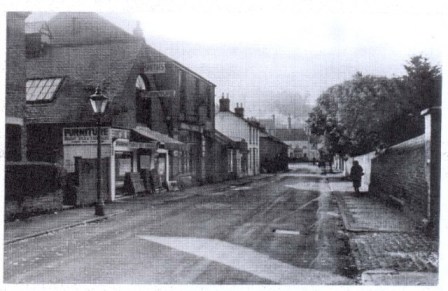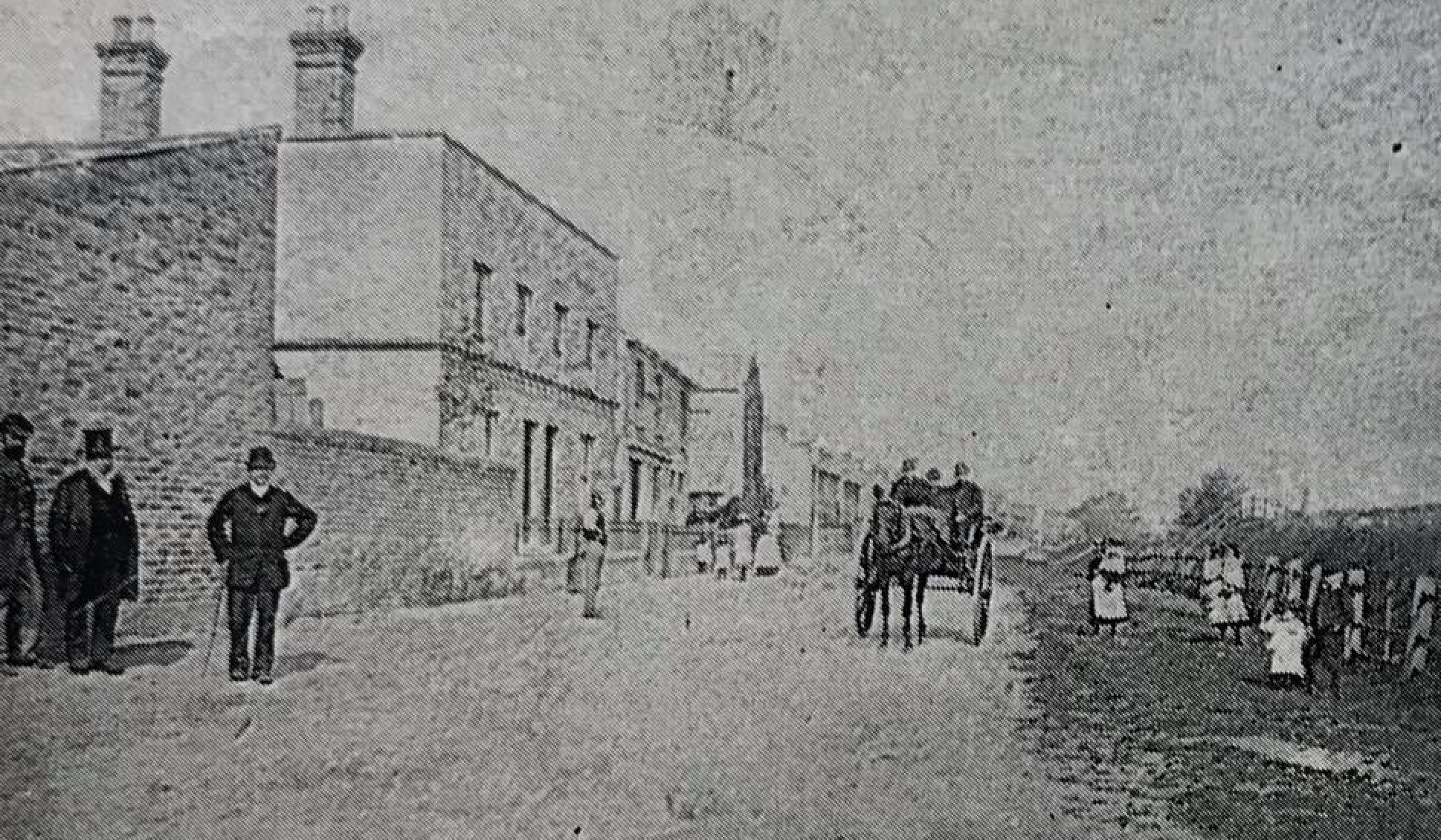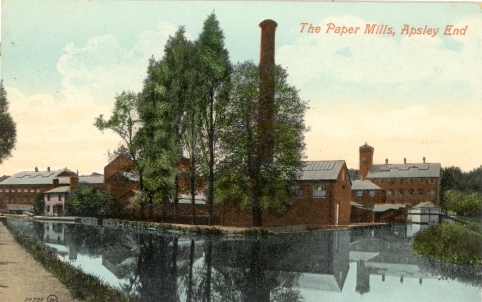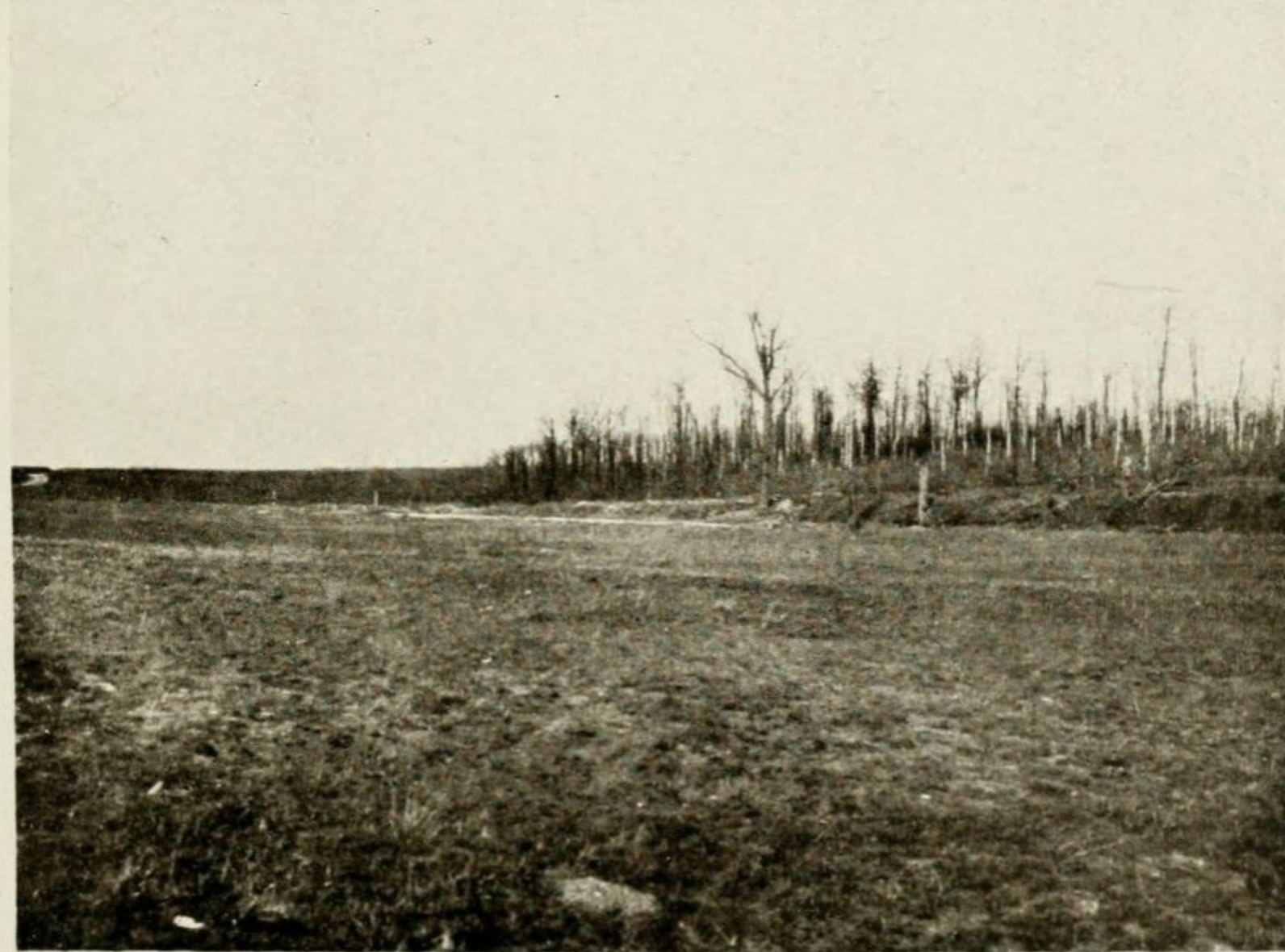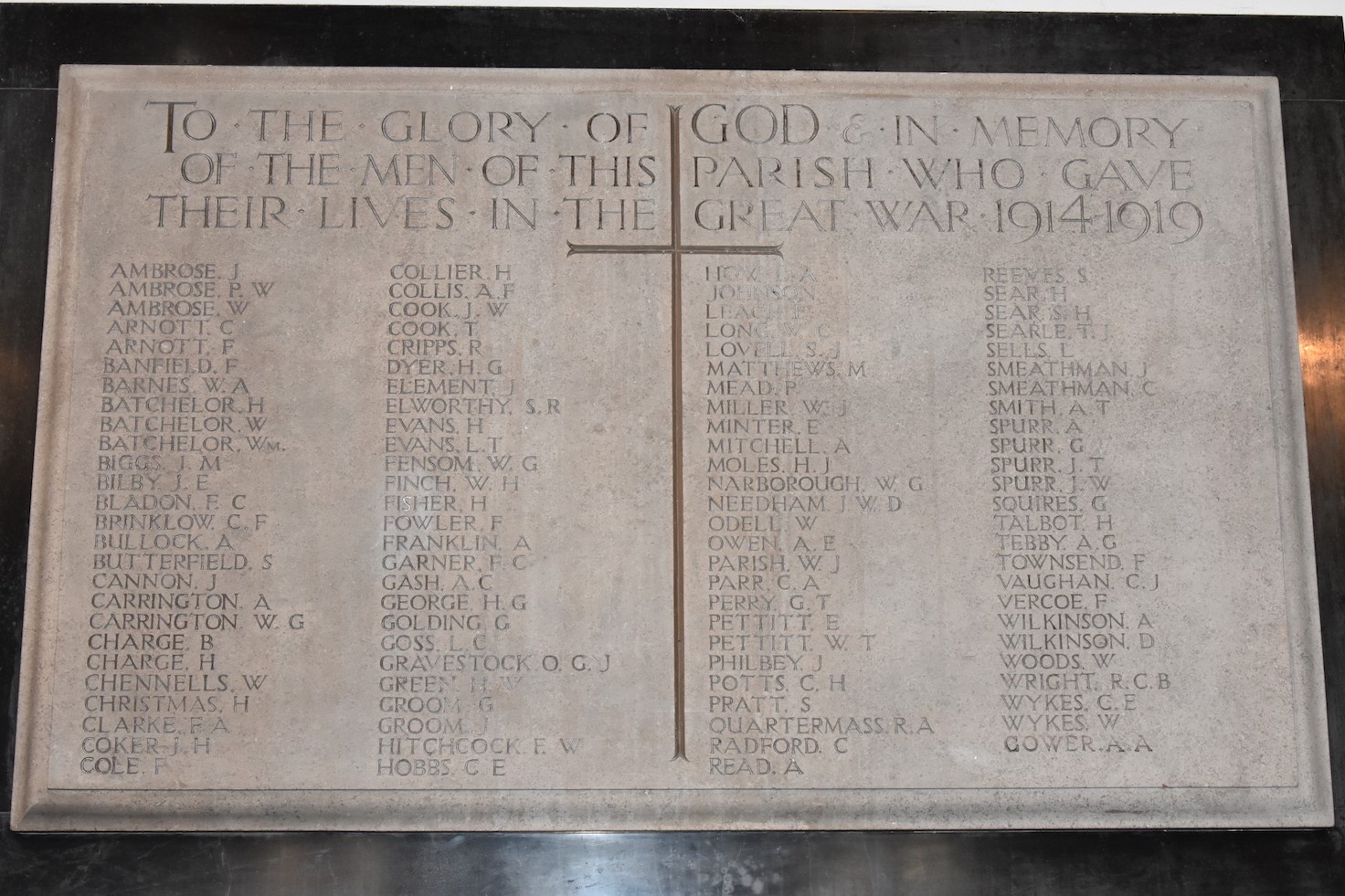Fallen in November 1917:
Joseph Ambrose
George Spurr
Herbert Edward Hawkins
Frank Mead
Ernest Arthur Wellman
William George Carrington
Joseph Walter Needham
William Glenister
William Henry Finch
Henry Charge
Lewis Arthur How
Montague Matthews
JOSEPH AMBROSE
266763 Private
1st Bn., Hertfordshire Regiment
Died of Wounds Thursday, 1st November 1917
Remembered with Honour, Tyne Cot Memorial, West-Vlaanderen, Belgium, Panel 153
Joseph Ambrose, known as Joe, was born in Piccotts End, Hemel Hempstead on Tuesday, 1st July 1890 and baptised on Friday, 8th August in the same year. He was the third son and child born to John Ambrose and Eliza Odell who had ten children together. Joe’s siblings were: Horace, Arthur, Frederick, Reginald Walter, Daisy, Rose, John, Ethel and the youngest Frank.
His younger brother Walter also died in the Great War, only three months before Joe and his biography appears on this site. His youngest brother Frank was killed in World War II when he was one of 1418 crewmen, only three of which survived, lost when the battlecruiser HMS Hood was sunk by the Bismarck in the north Atlantic on the 24th May 1941.
Another close family member, his cousin William ‘Weary’ Ambrose, was killed in France just four months before Joe. William’s biography appears earlier on this site.
His older brothers, Horace and Arthur both served in the Great War and survived the conflict.
When he was old enough to leave school and start work, Joe followed his older brothers into John Dickinson & Co. Limited at Apsley Mills. He worked as a ‘Die Stamper’ and like his brothers, Joe laboured in the Printing department. All ten of the Ambrose children would work for Dickinsons at one time or another.
Joe married Katie Spurr on 12th August 1911 at Christ Church Reformed Episcopal church in Hemel Hempstead. Joe and Katie had grown up together in Piccott’s End and lived only a few doors apart. Indeed, Katie lived next door to Joe’s Aunt and Uncle and in this close knit community, they shared many relatives for the Ambrose, Odell, Spurr, Ginger, Slough and Allum families.
Following their marriage, the young couple set up home at 50 Queen Street in Hemel Hempstead and soon had the first of their three children, Ivy Winifred born in January 1912. Doris May followed in May 1914 and finally, Kitty Lilian in September 1916.
Tragically, his wife Katie died two months after the birth of their third child in November 1916, when Joe was at the Front. The cause of Katie’s death was certified as ‘Acute Bronchitis’ which, even in 1917, would rarely have been fatal. It may in fact have been chronic obstructive pulmonary disease (COPD) the chronic and often fatal strain of bronchitis. The symptoms of both are broadly similar. After their mother’s death, the three girls moved to live with their paternal grandparents who also raised them to adulthood after Joe was killed.
Joe left Dickinsons and went to enlist on the 16th June 1915, when he attested at Hemel Hempstead and joined the Hertfordshire Regiment. He went to Hertford to undergo basic training and in early 1916 left to go overseas.
He disembarked at Le Havre on the 14th March and joined the 1/1st Hertfordshire Battalion in the field on the 22nd April 1916 near Festubert with 12 other drafts.
For the next few months Joe saw action in the trenches until he fought in the Battle of Ancre Heights in October, as the Somme Offensive was coming to an end. The following month he was in action at the Battle of Ancre, the last major British offensive of the year and the culmination of the Battle of the Somme.
Shortly after this engagement, Joe received the sad news that his young wife had died and he was immediately granted ten days home leave. He left for England on the 28th November and returned to Hemel Hempstead. His leave extended until the 18th December so that he could deal with family matters. He was then ‘retained on home service’ for a further three months and in the end, did not return to France until the 14th June 1917 when he disembarked at Boulogne.
He joined his Battalion again near Ypres, on the 11th August, the day before what would have been his sixth wedding anniversary.
Just a week later he fought in the Battle of Langemarck, part of the Third Battle of Ypres. This was followed in September by the Battles of the Menin Road and Polygon Wood and finally in October, he fought through the horror of the Second Battle of Passchendaele.
He came through all of the battles unscathed, but at the start of November the Battalion was subject to “A certain amount of gas shelling”. The Battalion War Diary recorded the following: “Casualties from 1st to 3rd; Killed - 2 OR's, died of wounds - 2 OR's, gassed - 5 OR's, wounded - 8 OR's.”
Sadly, Joe was a casualty and died on Thursday, 1st November 1917 as a result of gas poisoning.
He was commemorated on the John Dickinson & Co. Limited War Memorial in Apsley along with his brother Walter.
Queen Street, Hemel Hempstead where Joe and Katie set up home (Photo: https://www.ourdacorum.org.uk)
A wedding in Christ Church, Hemel Hempstead where Joseph and Katie married in 1911 (Photo: Colin Jarmin)
Apsley Mills where all ten of the Ambrose children would work (Photo:John Dickinson & Co Ltd 1804-1954, "The Endless Web", Joan Evans, Jan 1955)
German "Gas Shelling" World War 1 (Photo:https://www.firstworldwar.com)
John Dickinson & Co. Limited War Memorial, Apsley (Photo:Traquair Photography)
Tyne Cot Memorial, West-Vlaanderen, Belgium (Photo: CWGC)
Joe is Remembered with Honour on the Tyne Cot Memorial, West-Vlaanderen, Belgium, Panel 153.
He was 27 years old when he died.
Joe was eligible for the British War Medal and the Allied Victory Medal.
GEORGE SPURR
33286 Private
36th Bn., Royal Fusiliers
Died of Wounds Friday 2nd November 1917
Remembered with Honour, Dozinghem Military Cemetery, West Vlaanderen, Belgium, Grave XIV. D. 14.
George Spurr was born in Hemel Hempstead, Hertfordshire in the autumn of 1883 and baptised on the 20th December at St Paul’s church in the same year. He was born to George Spurr and Sarah Ann Shepherd who had nine children together. They were: William, George, Albert, John Thomas, Arthur, Alice Louisa, Annie and Walter. Arthur died when he was eight months old in 1891 and Annie died aged fourteen months in 1898. Another unknown child died in infancy.
Two of George’s brothers also lost their lives in the Great War, Albert in October 1917 only three weeks before George and John, who was killed in an accident in July 1918. Their biographies also appear on this site.
The Spurr family lived on Cherry Bounce, Hemel Hempstead for over thirty years, before moving into 86 High Street just around the corner by the end of the war. George’s father George was a ‘Farm Labourer’ for most of his working life, but when young George started work it was as a ‘Tan Yard Labourer’ for Henry Balderson at Cornerhall in Hemel Hempstead. The tannery was situated where Brayley Honda car showroom stands today.
By the time of the 1911 census he had changed occupations and was recorded as a ‘Carman’ for a corn merchant, much less noxious than the tannery work.
Records do not reveal when George enlisted but it is likely that he was called up under the Military Service Act in 1916. He went to Bedford to attest and enlisted with the Royal Fusiliers (City of London) Regiment. He was posted to the 36th Battalion Fusiliers, which was one of the labour battalions formed in May and June of 1916.
In April 1917 the 33rd to the 37th Battalions Royal Fusiliers became the 99th to 108th Labour Companies of the Labour Corps and George transferred to 106th Company. These companies were created to try and satisfy the growing demand for labouring men, both skilled and unskilled, to undertake work of all sorts at home and overseas.
By November 1918 some 398,000 men were serving in the Labour Corps, 10% of the British Army’s strength and of these some 9,000 men were killed. Men of the Labour Corps were not fighting troops, but often they were working on or close to the front line and units were often deployed for work within range of the enemy guns, sometimes for lengthy periods.
They were vital, because roads and railways had to be built and repaired, timber for everything from huts to duckboards had to be felled, sawed and fashioned, and salvage from discarded rifles to redundant boots, had to be recovered and wherever possible refurbished. The movement of ammunition, food, fodder and water for men and animals; fuel for motor vehicles and aircraft; sandbags, wire pickets, water pumps and 'elephant iron' that made the roofed-over sections of trenches, all had to get to the front line and additionally, bodies had to be exhumed and buried. All these things were carried out by the labour corps.
From the location of George’s grave, it appears that he was in the vicinity when the Second Battle of Passchendaele was fought. Although it is not known exactly where he died, records state that he “Died of Wounds”.
His end came on Friday, 2nd November 1917.
George is Remembered with Honour in Dozinghem Military Cemetery, West Vlaanderen, Belgium, where he is interred in Grave XIV. D. 14.
He was 34 years old when he died.
George was entitled to the British War Medal and the Allied Victory Medal.
Cherry Bounce, Hemel Hempstead where George grew up (Photo: Barbara Norman)
Balderson’s Tannery at Cornerhall where George started work (Image:https://maps.nls.uk)
A Labour Company road mending in France 1916 (Photo: IMW)
Dozinghem Military Cemetery, West Vlaanderen, Belgium, (Courtesy: CWGC)
Pte. George Spurr’s headstone (photo:Traquair Photography)
HERBERT EDWARD BICHENS HAWKINS
201227 Corporal
1/5th Bn., Bedfordshire Regiment
Killed in Action Saturday 3rd November 1917
Remembered with Honour, Gaza War Cemetery, Israel and Palestine (including Gaza), Grave XXII. A. 2.
Herbert Edward Bichens Hawkins was born in Finsbury, London on 28th December 1895 and baptised along with his sister Henrietta Elizabeth on 24th April 1896 at St Luke’s, Old Street, London. He was the fourth child born to Edward Charles Hawkins and Henrietta Sarah Bichens who had eight children, three of whom died young. The children were: Evelyn, Alice Mary, Robert Patrick, Henrietta Elizabeth, Herbert Edward and Ivy Victoria. Just like Herbert, each of the Hawkins children had been given a second or third forename Bichens, their mother Sarah’s maiden name.
Herbert’s father was a professional soldier who initially enlisted with the Grenadier Guards in 1878, before transferring to the 6th Battalion Royal Fusiliers with which he served for twenty-six years. He achieved the rank of Serjeant Major by the time of his discharge in 1904. All the children were born in army barracks, Evelyn in Ireland, Alice at Windsor in Berkshire and the others at the Finsbury Barracks in London home to the Honourable Artillery Company.
Herbert’s father came to Nash Mills in 1905 to run the ‘Three Tuns’ public house which has served the village since 1793 and still stands on Belswains Lane today. This was no doubt a lucrative living given that the pub stood almost directly opposite the John Dickinson site at Nash Mills. Edward was the landlord of the ‘Three Tuns’ until he retired in 1912.
When Herbert left school in 1909, he started work with John Dickinson & Co. Limited in Apsley Mills, where his older brother Robert was already working. He joined Robert in the Book department and trained as a ‘Book Binder’, before moving to the Card department where he was working when the war began.
Shortly after the outbreak of war, Herbert went to Bedford where he attested in February 1915 and enlisted with the Bedfordshire Regiment. He was posted to the 5th Battalion at Bury St Edmunds and spent the next year training until before going overseas in January 1916. The 5th Battalion was redesignated the 1/5th and assigned to the 162nd (East Midland) Brigade in the 54th (East Anglian) Division. It performed Home Defence around East Anglia until it was sent overseas in July 1915.
The battalion left Devonport on 26th July 1915, bound for 'somewhere out East' and after a brief stop-over in Egypt, disembarked at Gallipoli, serving there between the 10th August and 4th December.
During the assault against the Kiretch Tepe Sirt on the 15th August 1915, a Staff Officer observing the Battalion’s progress through his binoculars, saw the metal flashes on the soldiers uniforms glinting yellow in the sun as they doggedly advanced. He remarked "By Jove! If only we had one or two more battalions of those yellow devils we should be across the peninsular by tomorrow". With that, the battalion's nickname - the 'Yellow Devils' - was born.
A pitifully small number of them remained by December 1915 and the 1/5th Bedfords was moved back to Egypt to be rebuilt between January and March 1916. Herbert joined his unit on the 12th February at Mena Camp in Cairo as part of a draft of 420 men. He had already been promoted to Lance Corporal and not long after he joined his Battalion, he was promoted Corporal.
For the next year the Battalion were charged with guarding the Suez Canal until it advanced to Gaza with the British and Commonwealth forces in March 1917. Herbert saw his first serious action at the First Battle of Gaza on the 26th March, where the Egyptian Expeditionary Force suffered defeat despite almost capturing Gaza.
A month later he fought in the Second Battle of Gaza were the allied defeat was more emphatic and the 1/5th Bedfords suffered a number of casualties as recorded in the War Diary: “Casualties for the day, 2 officers wounded, Lieut H. Wilkin MC & 2nd Lieut L.L. Brereton who died of his wounds 10 days after & about 40 ORs killed wounded & missing.”
Herbert survived both battles and apparently avoided the sickness that beleaguered so many of his comrades in the desert. Diseases such as Typhus were rife and fever and dysentery were common ailments amongst the allied troops. The Battalion War Diary entry in May, gives an indication as to the extent of the issue as follows: “Average Daily Sick Average daily sick for 1st week 75 all ranks Average daily sick for 2nd week 110 all ranks Average daily sick for 3rd week 105 all ranks Average daily sick for 4th week 122 all ranks Average daily sick MONTH 102 all ranks Max number of sick on 20th 208 all ranks Minimum number of sick on 2nd 56 all ranks”
In July he fought in both raids at ‘Umbrella Hill’ were the 1/5th Bedfords earned twenty-five Military Medals awarded for gallantry in both raids. The Battalion suffered sixty-one casualties in these actions but again Herbert’s luck held and he came through unscathed.
On the 2nd November 1917 he fought in the Third Battle of Gaza and over the next two days the Bedfords came under persistent heavy shelling from the Turkish position on higher ground. The number of casualties incurred is not known, but they were significant and Herbert was amongst the men who fell.
He was killed on Saturday, 3rd November 1917. At the time of his death he was Acting Sergeant and had he lived would have been promoted Sergeant.
Finsbury Barracks, Islington, London where Herbert was born (Images: H.A.C.)
"Three Tuns" at Nash Mills where Herbert's father was Landlord (Images: http://geo.nls.uk/ and Traquair Photography)
Allied troops at the Third Battle of Gaza (Photo: Timetoast https://www.timetoast.com)
Extract from The Hertfordshire, Hemel Hempstead Gazette and West Herts Advertiser 24th Nov. 1917
John Dickinson & Co. Limited War Memorial, Apsley (Photo:Traquair Photography)
Gaza War Cemetery, Israel and Palestine (including Gaza) (Photo: CWGC)
Herbert’s death was announced a few weeks later in the Hemel Gazette along with a short obituary. (see extract)
He was commemorated on the John Dickinson & Co. Limited War Memorial in Apsley.
Herbert is Remembered with Honour in Gaza War Cemetery, Israel and Palestine (including Gaza), where he is interred in Grave XXII. A. 2.
He was only 21 years old when he died.
Herbert was entitled to the British War Medal and the Allied Victory Medal.
FRANK MEAD
21854 Private
1st Bn., Bedfordshire Regiment
Died of Wounds Saturday 3rd November 1917
Remembered with Honour, Wimereux Communal Cemetery, Pas de Calais, France, Grave VI. G. 3A.
Frank Mead was born in St. Margarets, near Great Gaddesden, Hertfordshire in the spring of 1898 and baptised on Sunday, 21st August the same year, at St John the Baptist Church in the village. He was the only child born to Frederick Mead and Fanny Dean.
His father Frederick was a ‘Stockman’ and ‘Farm Labourer’ and the family lived at the quirkily named ‘Covetous Corner’, at St. Margarets between the villages of Great and Little Gaddesden.
On the outbreak of war, Frank was not old enough to join the Colours and he was subsequently called up under the Military Service Act in 1916 when he was eighteen. He went to Bedford where he attested and enlisted with the Bedfordshire Regiment in January 1917 and was sent to undergo basic training with the 3rd Battalion at Felixstowe.
When he was sent overseas, he was posted to the 1st Battalion Bedfordshire Regiment, It is not known exactly when Frank went to France, but it was unlikely to have been before June 1917 and was more probably on the 5th September when a draft of thirty-eight men joined the unit.
On the 4th October Frank fought in the Battle of Brooseinde, which would prove to be the most successful allied attack of the Third Battle of Ypres. Following this action, the Battalion was subjected to six days of heavy German shelling which culminated with the failed attack at the Battle of Poelcapelle and which proved costly for the 1st Bedfords.
The War Diary records that: “10 Oct 1917 - Ridge Wood Battn was relieved by 7th Bttn K.R.R.Corps relief complete by 11.30 pm Battn withdrew to RIDGE WOOD. From the 4th to 10th The Battn was subjected to Heavy shelling. Total casualties - 4 officers Killed, 6 wounded, 35 [Other Ranks] Killed, 97 wounded, 4 missing.”
Frank survived the engagements, but his luck was soon to run out when the Battalion fought in the Second Battle of Passchendaele, which was the culminating attack of the Third Battle of Ypres.
In the low ground west of the Passchendaele Ridge, three months of constant shelling had blocked the watercourses that normally provided drainage. When rain began falling on the night of the 4th October and continued intermittently for the next three days, the battlefield was once again transformed into a quagmire, making movement extremely difficult.
It was in these horrendous conditions that the Battle was fought and at some point, between the 26th and 28th October Frank was wounded. Altogether the 1st Bedfordshires incurred 103 casualties over these three days in the Front Line.
He was taken out of the line to a Field Ambulance, before being evacuated to a Casualty Clearing Station. It was here, six days later, that he finally succumbed to his wounds.
Frank died on Saturday, 3rd November 1917. He had been at the Front for only sixty days when he died.
Frank is Remembered with Honour in Wimereux Communal Cemetery, Pas de Calais, France where he is interred in Grave VI. G. 3A. The inscription on his headstone, requested by his mother Fanny, reads: “WE FEEBLY STRUGGLE THEY IN GLORY SHINE”, a line from the Lutheran hymn ‘For All the Saints’ which enjoyed huge popularity at the time of the Great War.
He was only 19 years old when he died.
Frank was entitled to the British War Medal and the Allied Victory Medal.
St John the Baptist, Great Gaddesden where Frank was baptised (Photo: Traquair Photography)
Landguard Fort, Felixstowe where Frank trained before going to the Front (Photo: Suffolk Regiment)
The entire 3rd Battallion Bedfords at Landguard Fort (Photo:http://bedfordregiment.org.uk)
The battlefield at Passchendaele (Photo: https://www.ww1battlefields.co.uk)
Wimereux Communal Cemetery, Pas de Calais, France (Photo: CWGC)
ERNEST ARTHUR WELLMAN
554075 Rifleman
2nd/16th Bn., London Regiment (Queen's Westminster Rifles)
Died of Wounds Wednesday 7th November 1917
Remembered with Honour, Beersheba War Cemetery, Israel and Palestine (including Gaza), Grave O. 61.
Ernest Arthur Wellman was born on the Old Kent Road, Southwark, London on Tuesday, 5th January 1887, the only child born to Arthur Edward Wellman and Elizabeth Jane Carpenter. His father Arthur was a ‘Brass Finisher’ which proved to be a profitable trade for when he died, his estate was worth the equivalent of £500,000, in today’s money.
Ernest started school in September 1891 aged four, when he went to Moreland Street Primary which still functions today, albeit from much more modern premises. When his education was complete, he found work with a Stationery company and trained as a ‘clerk’.
This may have been one of the London branches of Dickinsons because by 1911, Ernest had moved to Apsley End and was working as a ‘clerk’ in Apsley Mills. The description of his job belies the fact that he was a ‘paper expert’ and as a result his job was ‘starred’ as a reserved occupation by the time war was declared.
Ernest married Clara Stanley in Islington in September 1910. Clara lived not far from Ernest and in fact had gone to school in Queens Head Street, just around the corner from the Wellman family home in Southwark. The young couple moved into ‘Highfield’ on Bennett’s End Lane, Apsley End and in 1913 they had their only child, a son named Stanley Herbert.
After war had been declared in August 1914, there was a popular demand for a means of service for those men who were over military age or those with business or family commitments which made it difficult for them to volunteer for the armed services. This resulted in the formation of local volunteer defence groups which were at first frowned upon by the authorities fearing such groups might interfere with recruiting for the regular army.
In November 1914 however, the Government granted some recognition by setting up a Central Association of Volunteer Training Corps (VTC). By February 1918, there were 285,000 Volunteers, 101,000 of whom had been directed to the Corps by the Tribunals set up after the Military Service Act in 1916 which determined if men called up had to join the war overseas.
The Hemel Hempstead VTC was established in January 1915 and Ernest joined shortly afterwards and was assigned to No.3 (Apsley) Platoon. He was exempt from active service due to his ‘starred’ occupation so he continued to work at Dickinsons whilst performing Home Defence duties with the ‘Volunteers’.
Ernest was called up under the Military Service Act in 1916 and his previous exemption from service was revoked. He attested at Hemel Hempstead sometime after November 1916 and enlisted with the London Regiment and was posted for training at Warminster in Wiltshire.
He was sent overseas in 1917, posted to the 2/16th Battalion London Regiment (Queen’s Westminster Rifles). He first went to the Balkans arriving in Greece on the 23rd April and joined his Battalion in Macedonia a few days later. His unit was engaged in attacks against the Bulgarian army in the Battle of Doiran and Ernest was soon in action as intermittent assaults were made by the allied forces. These continued until the 8th of May when in a series of four attacks over two days the British forces were finally defeated, suffering enormous casualties. They lost 12,000 killed, wounded and captured of which more than 2,250 were buried by the Bulgarian defenders.
Ernest came through unscathed and just over a month later he moved with his Battalion to Egypt disembarking there on the 25th June and joined the Sinai and Palestine Campaign. It was not until the 31st October that Ernest saw serious action again when he fought in the Battle of Beersheba followed immediately by the Third Battle of Gaza on the 1st and 2nd November.
It was during the latter action that Ernest was wounded and taken out of the line to 66 Casualty Clearing Station at Moablaka near Damascus in Syria. Typically, there were great distances between these facilities and the more important Base Hospitals and the battlefields of the Sinai and Palestine. It often took a week of travel over difficult terrain to evacuate the wounded to safety and for treatment and this appears to be the case for Ernest.
He was transported over 160 miles to Damascus after being wounded but sadly he died shortly after reaching the Clearing Station.
Ernest died of his wounds on Wednesday, 7th November 1917.
His death was announced in the Hemel Gazette ten days later, although the location of his demise was stated incorrectly. (see extract)
He was commemorated on the John Dickinson & Co. Limited War Memorial in Apsley and on the War Memorial Plaque in Marlowes (Carey) Baptist Church where he had been a member of the congregation.
Ernest is Remembered with Honour in Beersheba War Cemetery, Israel and Palestine (including Gaza), where he is interred in Grave O. 61.
He was 30 years old when he died.
Ernest was entitled to the British War Medal and the Allied Victory Medal.
The "Old Kent Road" in 1894 where Ernest grew up (Photo:http://www.southlondonguide.co.uk)
Members of a Volunteer Training Corps 1915 (Photo: Percy Robinson Collection)
Action during the Battle of Doiran where Ernest fought for the first time (Photo:https://alchetron.com)
The Third Battle of Gaza where Ernest was wounded (Photo: IWM)
66 Casualty Clearing Station were Ernest died (Photo: Australian War Memorial)
Extract from The Hertfordshire, Hemel Hempstead, Gazette and West Herts Advertiser 17th Nov. 1917
John Dickinson & Co. Limited War Memorial, Apsley (Photo:Traquair Photography)
Beersheba War Cemetery, Israel and Palestine (including Gaza) (Photo: CWGC)
WILLIAM GEORGE CARRINGTON
9471 Private
2nd Bedfordshire Regiment
Killed in Action Sunday 11th November 1917
Remembered with Honour, Kemmel Chateau Military
William George Carrington was born in Hemel Hempstead, Hertfordshire at the beginning of July 1890 and baptised on Monday, 14th of the same month, at St Paul’s Church on Queen Street in Hemel Hempstead. His mother was Mary Ann Carrington and when William was three-years-old she married William Leonard Ansell. His mother and new step-father then had seven children together who were: Violet Daisy, Edith, Beatrice May, George, Percy, Edgar and the youngest Gertrude Lavinia. Edgar died in 1906 aged only eighteen months.
When he was born, William lived with his maternal Grandparent’s at 3 Gosnold’s Yard, one of many small yards off the High Street in the Old Town, in a house now long gone. He grew up here and on Queen Street where his mother moved to when she married his step-father William Ansell. Indeed, William’s mother lived in the same house 8 Queen Street until her death in 1930.
When William left school, he first went to work for the British Paper Company in Frogmore Mill in Apsley. This is still producing paper products today and in fact, is the oldest working paper mill in the world.
In September 1905, William, aged fifteen, attempted to enlist with the 4th Bedfordshire Militia Regiment giving his age as “17 years and 3 months”. His efforts failed however, because he was rated “totally unfit” for service due to a “Rupture” on his left side and he was rejected.
Undeterred, he returned exactly one year later and made a second attempt. This time however, he called himself by his step-father’s surname and attested as William Ansell. Apart from this obvious difference, he also effected some other subtle changes to his personal information. He had previously stated that he was a ‘Congregationalist’ and now he was ‘Church of England’ and he also claimed never to have been rejected for military service in the past. He gave his age once again as “17 years and 3 months”, ignoring the fact that he was still only sixteen.
His subterfuge succeeded and he was passed fit and signed up for six years with ‘D’ Company 4th Battalion Bedfordshire Regiment. Whether he was subsequently found out is not known, but only four months later on the 14th January 1907, he was discharged from the army on payment of £1 0s 0d.
In 1907 he left Frogmore Mill and moved a short distance to Apsley Mills, to work for John Dickinson & Co. Limited as a ‘General Labourer’.
His desire for a military career, however, was satisfied two years later when he enlisted with the 2nd Battalion Bedfordshire Regiment and became a professional soldier.
On completion of his basic training, William went to Bermuda to join his Battalion and remained there until 1912 when the unit moved to South Africa. The 2nd Battalion were at Roberts Heights near Pretoria in South Africa on the outbreak of war and it was immediately recalled to England, landing at Southampton on the 19th September 1914 and forming part of the 'Immortal' 7th Division.
Having refitted for European warfare, the division left Southampton at on the 5th October 1914, on board the S.S. Winifredian and after a brief stop at Dover for supplies, landed in Zeebrugge at 6.30 a.m. on the 7th October.
The division moved almost forty miles south to meet the rest of the British Expeditionary Force and on the 18th October, it met the German Army for the first time in a brief skirmish. For William, this was the first action in what proved to be three long, hard years of fighting.
He fought in and survived the First Battle of Ypres in 1914; in 1915 he came through the Battles of Neuve Chapelle, Festubert, the actions at Givenchy and the Battle of Loos in September. The following year saw him fight in the Somme Offensive; on the opening day at the Battle of Albert; then the Battles of Delville Wood in July and Le Transloy in October.
In 1917 he was involved in the German retreat to the Hindenburg Line in March, the Battle of Arras, specifically the First Battle of the Scarpe in April before being granted some well-earned home leave in July. He came back to visit family and friends in Hemel Hempstead and left to return to the Front on the 28th July.
By this time the 2nd Battalion was in Belgium and in William's absence had fought in the Battle of Pilckem Ridge, a phase of the Third Battle of Ypres, where it had lost seventy-five men. On William’s return, the Battalion was spared direct assaults for the rest of the year, being confined to aggressive patrolling and raiding instead. This was still dangerous work although mercifully, less devastating in terms of casualties that direct attacks.
By November the Battalion was in the Hollebeke sector, south of Ypres in support areas and the War Diary recorded what took place on the 11th as follows: “11 Nov 1917 Battalion in SUPPORT AREA. The Battalion moved at dusk and took up the following dispositions: - "D" Coy. relieved "A" Coy. in ROSE WOOD. "A" Coy. relieved a Company of the 17th Bn.K.L.R. holding the Right Front Line Sub-Sector. "B" Coy. were relieved by a Company of 10th Bn.L.N.Lancs, 37th Division and then relieved a Company of the 17th Bn.K.L.R. in RAVINE. "C" Company moved their Headquarters and 2 Platoons to DENY'S WOOD H.Q. "B" Company relieved the Liaison Post in GREEN WOOD and No.1.POST with 2 Lewis Guns. Casualties: - 1 O.R. killed. 2 O.R. died of wounds 8 O.R. wounded”.
What the account does not describe is that a shell landed in the dug-out occupied by William at Rose Wood, resulting in his instantaneous death.
William died on Sunday, 11th November 1917 exactly one year before the Great War ended.
His death was reported in the Hemel Gazette just over a month later along with two letters which had been received by his mother Mary Ann, one from the Battalion Chaplain and one from his platoon Officer. Both expressed sympathy and described the cause of William’s demise. (see extract)
The Chaplain referred to Mary Ann’s brother in his letter and this was Dan Freeman, William’s uncle who was only six years older and who served with William in the 2nd Bedfordshires as a professional soldier. He survived the war, married, had two children and died aged seventy-one in Watford.
William's name is recorded twice on the Hemel Hempstead War Memorial. He is listed first as William Ansell and then under his birth name, William George Carrington. This oversight is possibly explained by the fact that different members of his family proposed his inclusion without reference to each other until it was too late.
He was commemorated on the War Memorial Plaque in St. Paul's Church which sadly was lost when the church was demolished in 1961. The plaque was replaced by a Memorial Scroll recording the men who fell.
William is Remembered with Honour in Kemmel Chateau Military Cemetery, West Vlaanderen, Belgium where he is interred in Grave X. 61.
He was 27 years old when he died.
William was entitled to the 1914-15 Star, the British War Medal and the Allied Victory Medal.
St. Paul's Church on Queen Street, Hemel Hempstead where William was baptised (Photo:http://www.hertfordshire-genealogy.co.uk)
Queen Street, Hemel Hempstead where William grew up (Photo:http://www.hertfordshire-genealogy.co.uk)
Frogmore Mills, Apsley where William started his first job (Photo:https://www.frogmorepapermill.org.uk)
Extract from The Hertfordshire, Hemel Hempstead Gazette and West Herts Advertiser 22nd Dec. 1917
War Memorial Scroll, St. Paul's Church, Highfield, Hemel Hempstead (Photo: Traquair Photography)
Kemmel Chateau Military Cemetery, West Vlaanderen, Belgium (Photo: CWGC)
JOSEPH WALTER DAVID NEEDHAM
2nd Lieutenant
48th Sqdn., Royal Flying Corps
Died of Wounds Monday 12th November 1917
Remembered with Honour, Etaples Military Cemetery, Pas-de-Calais, France, Grave XXVIII. C. 6.
Joseph Walter David Needham, known as Walter, was born in Walthamstow, Essex on Friday, 14th October 1898 and baptised at St Matthew’s, Upper Clapton on Sunday, 27th November in the same year. He was the third child and oldest son born to Edgar Needham and Rhoda Alexandra Marsh who had a total of nine children together. They were: Winifred Rhoda Minnie, Dorothy Alice, Joseph Walter David, Cecil Hugh Latimer, Wilfred Herbert, Phyllis Marjorie, Lyonel Edmond, Douglas Martyn William and Eric Francis.
Wilfred died in 1923 aged twenty-one, as the result of a rugby accident received playing for the ‘Camelots’, now Hemel Camelot Rugby Club. He had worked as a reporter for the Hemel Gazette.
When Walter was born the Needham family lived at "Sunnyhill" on Prospect Road, an affluent part of Walthamstow and his father Edgar worked as a Publisher. In fact, Edgar owned an advertising business which he ran from 142 Fleet Street, London and it was his background in this business that brought the family to Hemel Hempstead.
Edgar purchased the The Hertfordshire, Hemel Hempstead Gazette and West Herts Advertiser in 1901 and moved with his wife and five young children to the town. The family took up residence at 41 (now 34) Alexandra Road, in a house called "Hill Brow", but referred to locally as the "Red House" due to the striking red tone of the local brick used to build it.
Edgar also founded the Berkhamsted Gazette in 1904 and in 1916, he purchased the Star Brewery at Bury Mill End in Hemel Hempstead from John Mayo Biggs. John Biggs sold the Brewery to enlist at the age of thirty-eight and he was killed in France two years later. His biography also appears on this site.
Walter was sent to Berkhamsted school where all his brothers would follow, indeed, his brother Lyonel was in the same class as the famous writer Graham Greene whose father was headmaster at the school.
Walter was still at school and too young to enlist when war broke out, but he joined the Hemel Hempstead Volunteer Training Corps (VTC) shortly after it was established in January 1915. The VTC was similar to the Home Guard in the Second World War and at only sixteen years of age, Joseph was one of the youngest "Volunteers".
When he was old enough to enlist with a Cadet force, Walter joined the Inns of Court Officer Training Corps (OTC) on the 29th October 1915, based at Berkhamsted. The Inns of Court Regiment was a London training unit which initially sourced men from the legal profession. However, due to growing demand for young officers, it opened its ranks to "public schools and university men" in 1915. During that year alone it is estimated that 130,000 men applied to join, of which only one in ten was successful.
Walter then trained with the OTC for the next sixteen months and this included digging trenches as well as field manoeuvres across the countryside between Berkhamsted and Hemel Hempstead. In all, the men dug around thirteen miles of trenches across Berkhamsted Common, evidence of which remains visible over 100 years later.
On completion of his education, Walter had been articled to Mr. W. R. Locke, the Borough Surveyor, and was reported to be developing a career of great promise by the time he joined the OTC. Walter Locke played a significant part in the lead up and early stages of the War in Hemel Hempstead as he worked to ensure suitable accommodation and facilities for the various army Regiments billeted in the area. This included services such as water and sanitation as well as the operational facilities which were set up in commandeered schools and halls.
In March 1917, Walter left Berkhamsted and went to Reading to begin his flight training with the Royal Flying Corps (RFC). He had been awarded his commission as a 2nd Lieutenant on the "General List". This acted as a holding unit for specialist officers (usually reservists) who had not yet been assigned to an active unit.
In June 1917, Walter was posted to 83 Squadron at Wyton, Cambridgeshire and took up his position as a Flying Officer and continued his flight training. He was then sent to 44 Training Section in Lilbourne, Warwickshire before being transferred for his final training with 38 Training Section at Rendcomb in Gloucestershire.
It was here that he was taught to fly the ‘Bristol’ F.2B Fighter, the biplane used mainly for aerial reconnaissance by the RFC. One month later, on the 23rd October, Walter received his final posting to EF 48 Squadron and was sent to Conteville in France to join his unit and take up flying duties.
Walter’s time in France proved to be brief and only three weeks after arriving, he was killed after crashing whilst returning from a reconnaissance mission over enemy lines. The reports of his death describe how during the sortie, Walter had lost contact with the rest of his flight formation after passing through "heavy cloud", and shortly afterwards his plane had crashed, seriously injuring him and his observer Lieutenant Evans.
Walter, despite reaching No.20 General Hospital at Camiers shortly after crashing, died of his wounds on Monday, 12th November 1917.
Lieutenant Evans wrote to Edgar Needham in the aftermath giving a description of events in a letter, which was published in the Hemel Gazette a month after Walter’s death. (see extract)
Lieutenant John Edward Martin Evans was also killed, only three months after Walter, aged 24 and he is buried in Roye New British Cemetery, Somme, France in Grave III. A. 7.
Walter is commemorated on the war memorial plaques in Berkhamsted School, in St. Mary's Church where he worshipped and on the Inns of Court Officers' Training Corps Memorial close to the temporary training camp of the Corps on Berkhamsted Common. This memorial is a Grade II listed building and the pedestal bears the inscription: “In memory of the Inns of Court Officer Training Corps who in this neighbourhood trained over twelve thousand men to serve as commissioned officers in the Great War 1914-1918 and in affectionate remembrance of the two thousand who gave their lives for their country. This monument is erected by members and friends of the Corps”. This is followed by the Latin motto of the corps: “SALUS POPULI SUPREMA LEX” (the safety of the people is the supreme law).
Walter is Remembered with Honour in Etaples Military Cemetery, Pas-de-Calais, France, where he is interred in Grave XXVIII. C. 6. The inscription on his headstone, requested by his father Edgar, reads: “GREATER LOVE HATH NO MAN THAN THIS THAT A MAN LAY DOWN HIS LIFE FOR HIS FRIENDS”.
He was only 19 years old when he died.
Walter was entitled to the British War Medal and the Allied Victory Medal.
St Matthew’s Church, Upper Clapton were most of the Needham children were baptised (Photo: https://stmatthewse5.wordpress.com)
The "Red House", Alexandra Road, Hemel Hempstead where the Needham family lived (Photo: Traquair Photography)
Bristol F.2B Fighter of the type flown by 2nd Lt. Walter Needham (Photo: GDFL Wikimedia)
No. 20 General Hospital, Camiers, France (Photo: loyalregiment.com)
Extract from The Hertfordshire, Hemel Hempstead Gazette and West Herts Advertiser 29th Dec. 1917
Inns of Court War Memorial, Berkhamsted Common (Photo:Traquair Photography)
2nd Lieutenant J. W. D. Needham’s Headstone (Photo:Traquair Photography)
WILLIAM GLENISTER
266853 Corporal
1st Bn., Hertfordshire Regiment
Killed in Action Wednesday, 14th November 1917
Remembered with Honour, Tyne Cot Memorial, West-Vlaanderen, Belgium, Panel 153
William Glenister was born in Hemel Hempstead on Friday, 11th May 1893 and baptised two weeks later on Thursday, 24th May at St John the Evangelist Church in Boxmoor. He was the sixth child born to Amos William Glenister and Lois Amelia Putnam who had nine children together. These were: Alfred William, Lois Amelia, Beatrice Mary, Amos Seabrook, Joseph Austin, Annie, William, Thomas Jesse and one other child which died in infancy. William’s sister Lois also died as an infant in 1879. William’s younger brother, Thomas, was also killed in the Great War, falling in France five months before him. Thomas’ biography also appears on this site.
William grew up at 10 Corner Hall in Hemel Hempstead, next door to the forge where his father Amos worked as a Blacksmith and Farrier, just as his father Joseph had done.
When William left school in 1907, he went to work for John Dickinson & Co. Limited in Apsley Mills, were he trained as a ‘Clerk’.
In early 1915 the Glenister family suffered a double tragedy when William’s parents both died within a month of each other in March and April.
William join the Colours in September 1915 following the National Registration Act. The Act had been passed on 15th July as a step towards stimulating recruitment and to discover how many men between the ages of fifteen and sixty-five were engaged in each trade. All those in this age range who were not already in the military were obliged to register, giving details of their employment.
The results of this census became available by mid-September 1915 and it showed almost 5 million men of military age who were not in the forces, of which 1.6m were in “starred” (protected, high or scarce skill) jobs.
William attested at Hemel Hempstead, enlisting with the Hertfordshire Regiment and he was then sent to the 3rd ‘Reserve’ Battalion at Hertford to undergo basic training. On completion of training he was posted to the 1st Battalion Hertfordshire Regiment and sent to Belgium.
It is not known exactly when William went overseas, but it may well have been in December 1916 when the 1st Herts received a series of new drafts whilst in the vicinity of Ypres.
Right from the beginning of 1917, the 1st Herts were in action and William fought in the Front Line trenches and took part in various raiding parties.
In July he fought in the Battle of Pilckem Ridge, the opening encounter in the Third Battle of Ypres. This attack proved to be immensely costly for the 1st Herts and during the attack on the opening day at St. Julien, 459 casualties were incurred. This represented almost half the Battalion fighting strength.
William survived the carnage and then fought in the Battles of Langemarck in August, the Menin Road and the Battle of Polygon Wood in September. The Battalion suffered casualties in each of these actions, although not as severe as at Pilckem Ridge. Once more William survived unscathed.
In October he fought in the Second Battle of Passchendaele and over three days the Battalion was fortunate to incur relatively light casualties given the horrors of this engagement.
The early part of November brought frequent poison gas attacks from the Germans which resulted in many casualties. On the 14th November William was involved in an action described as follows in the Battalion War Diary: “ 14-11-17. The Bn was relieved by 1st/1st Cambs Regt. & moved to BODMIN COPSE with 2 platoons of No.4 Coy and 3 platoons of No.1 Coy in closer support at TOWER & VELDHOEK.”
Two days later, a second entry explains the outcome of the support efforts: “16-11-17. The Bn was relieved by 16th Bn Sherwood Foresters & moved by lorry from SHRAPNEL CORNER to CHIPPEWA CAMP. Casualties during tour; Killed - 4 OR, Died of wounds - 1 OR, wounded 4 OR, gassed 3 OR, missing 1 OR.”
William was one of the four unfortunate men killed and he died Wednesday, 14th November 1917.
He was commemorated on the John Dickinson & Co. Limited War Memorial in Apsley and on the War Memorial Plaque in St. John the Evangelist Church, Boxmoor.
William is Remembered with Honour on the Tyne Cot Memorial, West-Vlaanderen, Belgium, Panel 153.
He was only21 years old when he died.
William was eligible for the British War Medal and the Allied Victory Medal.
St. John the Evangelist Church, Boxmoor where William was baptised (Photo: http://www.hertfordshire-genealogy.co.uk)
Amos Glenister (2nd from left) at his Corner Hall Forge c1893 (Photo: Public Domain)
A poster heralding the National Registration Act , 1915, census (Image:https://www.peoplescollection.wales)
William fought in the Battles of Langemarck, Menin Road and Polygon Wood (Photos: IWM and https://www.smh.com.au/national)
The appalling quagmire at the Second Battle of Passchendaele (Photo: https://en.wikipedia.org)
John Dickinson & Co. Limited War Memorial, Apsley (Photo:Traquair Photography)
Tyne Cot Memorial, West Vlaanderen, Belgium (Photo: CWGC)
WILLIAM HENRY FINCH
40661 Private
7th Bn., Norfolk Regiment
Killed in Action Thursday, 22nd November 1917
Remembered with Honour, Cambrai Memorial, Louverval, Nord, France, Panel 4
William Henry Finch was born in Hemel Hempstead, Hertfordshire in 1885 and baptised on 22nd December at St Mary’s church in the same year. He was the third child and second son born to William Finch and Annie Mary Taylor. William and Annie had eleven children together two of whom died in infancy. The children were: Ellen (Helen) Jane, Annie Mary, Joseph, William, Cecil Victor, Frank Matthews, George Arthur, Stanley Herbert, Queenie (Lydia May) and the youngest Eley. Ellen died in 1882 aged three and Queenie died in 1918 aged twenty-one and was buried at Holy Trinity church in Leverstock Green, Hertfordshire.
William’s father, William Snr., was a farmer and worked 195 acres at Lovett’s End Farm, about one mile to the east of Piccotts End, where the Finch children all grew up. The Finch family had a long history of farming in the area and records can be traced back to the mid-16th century to Corner Farm, Westwick Row near Leverstock Green. The family have had a long and strong association with Holy Trinity Church in the village.
William’s mother Annie also came from a farming family and the 1891 census recorded him and his brother Cecil at the home of their uncle Henry Taylor at Marsh Farm in nearby Gaddesden Row.
It is not known where William worked, although like his brothers, he was probably occupied as ‘farmhand’ with his father at some point.
William was called up under the Military Service Act and enlisted in April 1916 at St Paul’s Churchyard in Middlesex. This was at the famous "Actors" Church in Covent Garden in London. It is not clear why William enlisted in London, but he may have been living and working there at the time. He was not at Lovett's End Farm during the 1911 Census so he may already have moved away from Hemel Hempstead by that time.
He enlisted in the Army and was posted to the Norfolk Regiment at Felixstowe to undergo basic training before being sent overseas to the 7th (Service) Battalion.
Records do not reveal exactly when he went to join his Regiment at the Front, but it would have been about six months after his enlistment, so sometime around October or November in 1916. This meant he would have arrived just as the Somme Offensive ended and as the Norfolks were moving to the Arras sector and preparing for the next major allied offensive.
During his training, William had specialised in mortar firing using the recently invented 3-inch Stokes mortar. These armaments were used by the Light Trench Mortar Batteries assigned to each Brigade which were made up as follows: Two Sections, each of four 3-inch Stokes mortars with a Captain, three Lieutenants or Second Lieutenants, two Sergeants, eight Corporals or Lance-Corporals, thirty-two Privates and four Batmen.
These sections were skilled crews capable of delivering a very high rate of fire, with a number of rounds, perhaps up to nine, in flight at any one time.
In April and May 1917, William saw his first serious action when he fought at the First Battle of the Scarpe and the Battle of Arleux, followed closely by the Third Battle of the Scarpe, phases of the Arras Offensive. The 7th Norfolk Regiment suffered substantial casualties in these actions, over 180 at the First Scarpe, however, William survived unscathed.
Between the 17th May and the 19th October 1917, the Norfolks held positions east of Monchy le Preux, mounting several raids and small scale attacks and beating off some made against them, notably in the area of Hook Trench, Pick Avenue and Tites Copse.
On the 4th October, William was granted some home leave, along with eight other men, and he returned to Hemel Hempstead to see family and friends and to take a well-earned rest. This would be the last time he would see them.
On his return, his unit moved to Villeroy-sur-Authie, ten kilometres to the south of Hesdin where the Divisional HQ had been established as a preparatory step before a move to the Cambrai Front.
On the 20th November the 7th Norfolks were part of a successful attack on the Hindenburg Main Line where it suffered only light casualties. For the next three days it was engaged in consolidating positions and came under intermittent shelling from the Germans. It was at this point that William lost his life when he was killed by a piece of shrapnel from an enemy shell.
William was killed on Thursday, 22nd November 1917.
Three weeks later his mother received a letter from his Platoon Officer describing his end and expressing sympathy. The contents were published in the Hemel Gazette. (see extract)
William was commemorated on the War Memorial Plaque in St. Mary's Church, High Street, Hemel Hempstead.
William is Remembered with Honour on the Cambrai Memorial, Louverval, Nord, France, Panel 4.
He was 31 years old when he died.
William was eligible for the British War Medal and the Allied Victory Medal.
St. Mary's Church, High Street, Hemel Hempstead where William was baptised and worshipped (Photos: http://www.hertfordshire-genealogy.co.uk)
Lovett’s End Farm where William grew up (Image: https://maps.nls.uk)
3-inch Stokes Trench Mortar WW1 (Photo: Berkshire War Memorials)
Extract from The Hertfordshire, Hemel Hempstead Gazette and West Herts Advertiser 8th Dec. 1917
War Memorial Plaque St. Mary's Church, High Street, Hemel Hempstead (Photo: Traquair Photography)
Cambrai Memorial, Louverval, Nord, France, (Photo: CWGC)
HENRY CHARGE
40033 Private
12th Bn., Suffolk Regiment
Killed in Action Saturday, 24th November 1917
Remembered with Honour, Cambrai Memorial, Louverval, Nord, France, Panel 4.
Henry Charge, known as Harry, was born at Hoblett’s Orchard on High Street Green, Hertfordshire in 1878, and baptised on 10th October 1879 at St Paul’s Church, Hemel Hempstead, along with his older brother Charles. Their mother was Fanny Charge and the family lived at Hoblett’s Cottages with Fanny’s father John, a "Shepherd" from nearby Leverstock Green. Two years after the baptism, Fanny married Joseph Edward Lee, an uncle of Harry’s future wife Jenny.
The 1891 census recorded twelve-year-old Harry living with the Pugh family in Chapel Street, Hemel Hempstead and already working as an ‘Agricultural Labourer’. Not long afterwards he got a job as a ‘Labourer’ in the Brickfields at Maylands, just across the road from where he was born and he lived not far away at Adeyfield.
In April 1894, Harry enlisted with the Militia and joined the 4th Battalion Bedfordshire Regiment. He gave his age as “18 years and 4 months” but his army medical, assessed his apparent physical age as “17 years and 6 months”. In fact, he was still only sixteen years old. Nevertheless, he was deemed fit for military service and joined the Militia.
In his attestation papers, Harry is described as “5 feet 4¾ inches”, weighing “124 lbs” (8st 12lbs), with a fresh complexion, grey eyes, brown hair and with a tattoo on each forearm. He served for two and a half years before he paid a forfeit of £1 to buy himself out and left the army in April 1897.
He met his wife Jenny (Jeanette) through his step-father Joseph, who was her uncle. Harry and Jenny married on Christmas Day 1897 at St Pauls Church on Queen Street, Hemel Hempstead in what records show was a double celebration.
On the same day in the church and just before Harry and Jenny tied the knot, her brother Frederick married Jane Mitchell, with James and Annie Lovett acting as witnesses for both couples.
The address listed for all four newly weds at the time was “Hardy Field”, which appears to have been misheard, as in fact all four lived in the area of "Adeyfield", only a mile from the Church.
Harry and Jenny remained in Adeyfield where he now worked as a ‘Bricklayer’. They had five children together starting with Minnie in 1898; Harry (Henry) two years later in 1900; then came Charley (Charles) in 1904; Sidney in 1905 and finally; after a five year gap, Ivy in 1910.
After Harry’s death, Jenny never remarried and raised their family alone. In 1939 she was living at Bury Lodge with her son Sidney, who was ‘Head Gardner’ at the ‘Bury’ in Hemel Hempstead. She died in 1941 aged sixty-four.
At some time after 1911, Harry went to work for John Dickinson & Co. Limited in Apsley Mills and he remained there until he joined the Colours.
Harry was called up under the Military Service Act and he attested at Hemel Hempstead in July 1916 and was posted to the Suffolk Regiment. He was sent to Felixstowe to train with the 3rd (Reserve Battalion) and then posted for overseas service to the 12th (East Anglian) Battalion Suffolk Regiment in early 1917. He arrived with his unit in May when it was at Gouzeaucourt, twelve miles south of Cambrai in France.
The 12th Battalion was originally raised as a ‘Bantam’ battalion at Bury St Edmunds in July 1915. The ‘Bantams’ were the brainchild of Alfred Bigland, MP for Birkenhead, who had heard of the frustration of perfectly fit men rejected by the army because they did not meet the minimum physical requirements namely; 5ft 3 inches tall, with a chest measurement of at least 34 inches. He gained permission from the War Office to form up a battalion of smaller men, which he funded himself, and the first ‘Bantam’ unit came into being in Birkenhead.
The recruits were all between 4 ft 10 ins and 5 ft 3 ins, and whilst many underage volunteers took advantage of these entry criteria, the creation of these battalions proved to be highly popular and soon units spread across the country and gained their own unique identity. Many developed a fearsome fighting reputation and as a result, adopted the emblem of the Bantam, a small but aggressive fowl. By the time conscription arrived in 1916, and because of the heavy casualty rates in the war, the units began to lose their identity. By 1917 they were indistinguishable from other Battalions of the British Army.
Following his arrival at the Front, Harry spent the summer and early autumn in the trenches, in support with the Battalion or training. All this changed however, on the 20th November 1917 when the allied offensive began around Cambrai.
The town of Cambrai, was an important supply point for the German "Siegfriedstellung" (Hindenburg Line) and capture of the town, and nearby Bourlon Ridge, would threaten the rear of the German line to the north. The British plan was to use tanks en masse and on the first day of the attack, this proved a successful strategy with early gains by the allies. However, owing to stiff German resistance and mechanical unreliability of the new technology, progress slowed on the second day.
The 12th Suffolks took up positions in reserve on the third day of the battle and received orders to prepare for a probable counter-attack. On the following day, this order was changed and instead, the Suffolks prepared to attack Bourlon Village. The assault was launched at 3pm, but soon encountered heavy machine gun fire from the German positions and the attack stalled. For the next four hours the attackers worked to gain the upper hand, but ultimately had to withdraw to their original positions due to stiff enemy resistance.
Inevitably the action came at the cost of casualties and the Battalion War Diary recorded the toll at the end of the month. In all 141 men were killed, missing or wounded and unfortunately Harry was amongst this number.
He died on Saturday, 24th November 1917.
He was commemorated on the John Dickinson & Co. Limited War Memorial in Apsley.
Harry was also commemorated on the original War Memorial plaque in St Paul’s Church were he and Jenny married and worshipped. Unfortunately this plaque was lost during the move and subsequent demolition of the church in 1961, but the new church has recorded the names of all the men from its congregation who fell, and Harry is on this new scroll.
Harry is Remembered with Honour on the Cambrai Memorial, Louverval, Nord, France, Panel 4.
He was 39 years old when he died.
Harry was eligible for the British War Medal and the Allied Victory Medal
Pte. Harry Charge c1916 (Photo: Barnes 2009 - ancestry.co.uk)
Harry and Jenny Charge c1916 shortly after Harry’s enlistment (Photo: Barnes2009 - ancestry.co.uk)
British Mark IV (Male) tank ditched in a German trench during the Battle of Cambrai, November 20, 1917.
(Photo: Robert Hunt Library/Mary Evans Picture Library/age fotostock)
John Dickinson & Co. Limited War Memorial, Apsley (Photo:Traquair Photography)
War Memorial Scroll, St. Paul's Church, Highfield, Hemel Hempstead (Photo: Traquair Photography)
Cambrai Memorial, Louverval, Nord, France, (Photo: CWGC)
LEWIS ARTHUR HOW
41675 Private
12th Bn., Suffolk Regiment
Killed in Action Saturday, 24th November 1917
Remembered with Honour, Cambrai Memorial, Louverval, Nord, France, Panel 4.
Lewis Arthur How was born in Hemel Hempstead in the summer of 1887 and baptised on 9th October 1891 at St Paul’s Church on Queen Street. He was the youngest child born to Henry How and Eliza Brandon who had eight children together who were: William, Franklin, Walter Ernest, Herbert Edward, Christopher, Frederick, Annie Florence and Lewis Arthur. Lewis’ father Henry died in 1915 aged sixty-nine.
When Lewis left school in 1900, he went to work as a ‘Telegraph Boy’ in the Post Office. At this time the How family lived on Crescent Road, Hemel Hempstead and George Squires lived just three doors away. George was also killed in the Great War and he died only three months before Lewis. His biography also appears on this site.
Shortly afterwards, Lewis changed jobs when he went to work for Peek’s Laundry and as ‘Laundryman’. His job would appear to have been that of ‘Carman’, which involved collecting dirty laundry and delivering back when it had been cleaned. This was the job he was still doing when he was called up for service.
Lewis met Ellen Elizabeth Stapleton who worked as a ‘Tobacconist’ in Hemel Hempstead and the two became sweethearts. They were married in St Paul’s Church in early 1907 and soon afterwards moved into 49 South Hill Road, close to Heath Lane Cemetery in Hemel Hempstead.
By the 1911 Census they are recorded at home with a small child named rather grandly, Leonard Jackson Horatio Stainton who is described as a ‘Nurse Child’ and was aged eleven months. Leonard’s mother Amelia Gertrude Stainton had died in December 1910 and his father Edward Wise Stainton was living and working in Ceylon (Sri Lanka) as a ‘Tea Planter’.
One of Leonard’s parents may have been related to either Lewis or Ellen, or possibly just a friend, because it seems they had taken the child in following his mother’s death. It is not known what became of Leonard’s father but Lewis and Ellen raised him as their own. They presented him with a sister Nancy in February 1917 just before Lewis departed for France and in 1939 the two were living with their Aunt Annie Stapleton on Cotterells.
Following Lewis’ death, Ellen married again in 1920 to Albert Edward Hobbs, a Hemel Hempsteadian, who was sixteen years her junior. They had one child together Olive.
Lewis was called up under the Military Service Act and he went to Watford to attest in December 1916 where he enlisted in the Army and was posted to the Essex Regiment. When he was sent overseas he was posted to another regiment, the 12th (East Anglian) Battalion Suffolks.
It is not known when he went to France but it was unlikely to have been before May or June 1917. Following his arrival though he was assigned as a "Servant" to 2nd Lieutenant F. W. Nadat. This position is more commonly referred to as a "Batman" or "Orderly" and carried with it a number of duties which included: acting as a runner to convey orders from the officer to subordinates; maintaining the officer's uniform and personal equipment as a valet; driving the officer's vehicle, sometimes under combat conditions; acting as the officer's bodyguard in combat; digging the officer's foxhole in combat, giving the officer time to direct his unit; any other miscellaneous tasks the officer does not have time or inclination to carry out themselves. It was not unusual for a "Batman" to become a valet or domestic servant for his officer after the war finished. Aside form these duties, Lewis spent time in the trenches and in training until November and the next major allied operation around Cambrai.
The offensive started on the 20th November but it was the third day before Lewis went into action when the 12th Suffolks attacked with the objective Bourlon Village. The assault was launched at 3pm, but soon encountered heavy machine gun fire from the German positions and the attack stalled. For the next four hours the attackers worked to gain the upper hand, but ultimately had to withdraw to their original positions due to stiff enemy resistance.
Inevitably the action came at the cost of casualties and the Battalion War Diary recorded the toll at the end of the month. In all 141 men were killed, missing or wounded and unfortunately Lewis was amongst this number.
He died on Saturday, 24th November 1917.
His death was announced in the Hemel Gazette on the 8th December 1917 and in the following week’s edition a letter, sent to his wife by his Platoon Officer, was published in full. The letter begins by referring to the “…misery and suffering…” of Lewis, which is most probably a comment on the conditions of war suffered by all men, rather than some personal issues that Lewis was experiencing. 2nd Lieutenant Nadat clearly describes the relationship between the officer class and the other ranks, particularly the master/servant hierarchy. However, we can see that he had respect and affection for Lewis and feels real loss. At the distance of time, the last lines may appear somewhat trite to our modern sensibilities, however they are of the time and it is worth remembering how often he and other officers had to write to families with words of comfort and sympathy after a soldiers death. (see extract)
He was commemorated on the War Memorial Plaque in St. John the Evangelist Church, Boxmoor.
Lewis is Remembered with Honour on the Cambrai Memorial, Louverval, Nord, France, Panel 4.
He was 30 years old when he died.
Lewis was eligible for the British War Medal and the Allied Victory Medal
Lewis' first job was in the Post Office on Alexandra Road, right of picture with arched doorway (Photo: Richard Starling)
47 South Hill Road, Hemel Hempstead where Lewis and Ellen set up home in 1907 (Photo: Traquair Photography)
Extract from The Hertfordshire, Hemel Hempstead Gazette and West Herts Advertiser 15th Dec. 1917
War Memorial Plaque St. John the Evangelist Church, Boxmoor (Photo: Traquair Photography)
Cambrai Memorial, Louverval, Nord, France (Photo: CWGC)
MONTAGUE MATTHEWS
55257 Private
17th Bn., Welsh Regiment
Killed in Action Sunday, 25th November 1917
Remembered with Honour, Cambrai Memorial, Louverval, Nord, France, Panel 7.
Montague Matthews was born in Hemel Hempstead on Saturday, 6th February 1892 and baptised a month later on Friday, 11th March at St Mary’s Church in the town. He was the youngest son and child born to Harry (Henry) Matthews and Selina How who had seven children together. These were: Annie, Kate, Flora, Lily, Walter Henry, Sarah and Montague Thomas. Kate died in 1891 when she was only nine-years-old.
Montague’s mother Selina had been married before to Charles Hall, who died in 1879, and as a result, he also had four half-siblings who were: Mary, Louisa, Emma and Matilda. Selina died in 1895 at the age of forty-two and six years later Montague’s father married for a second time in 1901. His Step-Mother was Sarah Faulder who had been widowed and he also acquired another sibling from Sarah’s first marriage, Lizzie.
When Montague was born the family lived on Bury Road and his father Harry worked as a ‘Gardener’. By 1901 it had relocated to Russell Place in Boxmoor, next to the Boxmoor Baptist Chapel and ten years later, Montague and his parents had moved again to Cotterell’s Road (Cotterells today).
Towards the end of 1912, Montague married Daisy May Hicks in Hemel Hempstead. The pair had met in Dickinsons where they both worked, Montague as a ‘Printer’ and Daisy as an ‘Envelope Maker’.
They moved into their new home in Apsley shortly after their marriage and went on to produce two children together, both boys, Percy in 1912 and George in 1915. Sadly, their first boy Percy died shortly after birth.
Montague was called up under the Military Service Act in 1916 and he attested at Hemel Hempstead in December and enlisted with the Bedfordshire Regiment. When he was posted overseas, he went with the Bedfordshires to the ‘Infantry Base Depot’ near Boulogne-sur-Mer. From there he was transferred to the 16th battalion Welsh Regiment before finally being sent to the Front Line to join the 17th Battalion Welsh Regiment, a ‘Bantam’ unit.
Following his arrival, Montague was involved in raiding parties and training in the main, but in late November 1917, he saw his first serious action when his unit attacked Bourlon Wood at near Cambrai.
As part of the 40th Division, 119th Brigade, the 19th Battalion Welsh Regiment struggled along roads breaking up under the strain of thousands of men, wagons and lorries. It took fifteen hours to travel just nine miles to Havrincourt where the assault plan tasked the 121st Brigade to capture Bourlon and the 119th to go for the wood.
They attacked through ground mist on the morning of the 23rd November, when some of the units had to cross 1000 yards down the long slope from Anneux, across the sunken lane and up the final rise into the wood, all the while under shell fire.
There was close and vicious fighting in the wood, but after three hours the Welsh units of 119th Brigade were through and occupying the northern and eastern ridges at the edge of the undergrowth. The 121st Brigade was cut down by heavy machine gun fire, and few men got as far as the village.
Over the next few days, the Germans, having been driven from the wood, switched all of their artillery onto it. The battalions in the wood, including the 17th Welsh, were wiped out. The initial success had turned to disaster and the Battalion War Diary recorded the Casualties as “18 Officers and O.R.s 301”, approximately one third of its fighting strength.
Montague was one of the men killed and he died on Sunday, 25th November 1917.
He was commemorated on the John Dickinson & Co., Limited War Memorial in Apsley and on the War Memorial Plaque in St. Mary's Church, High Street, Hemel Hempstead where he had been baptised and worshipped.
Montague is Remembered with Honour on the Cambrai Memorial, Louverval, Nord, France, Panel 7.
He was 25 years old when he died.
Montague was eligible for the British War Medal and the Allied Victory Medal
St. Mary's Church, High Street, Hemel Hempstead where Montague was baptised (Photo: http://www.hertfordshire-genealogy.co.uk)
Bury Road, Russell Place and Cotterells Road where Montague grew up (Photo: Our Dacorum, Francis Frith, Eve Davies)
Dickinsons Apsley Mills where Montague and Daisy worked and met (Photo:http://www.hertfordshire-genealogy.co.uk)
The remains of Bourlon Wood November 1917 where Montague fell (Photo: http://thescribblerdotbiz.blogspot.com)
John Dickinson & Co. Limited War Memorial, Apsley (Photo:Traquair Photography)
War Memorial Plaque, St. Mary's Church, High Street, Hemel Henpstead (Photo: Traquair Photography)
Cambrai Memorial, Louverval, Nord, France, (Photo: CWGC)
